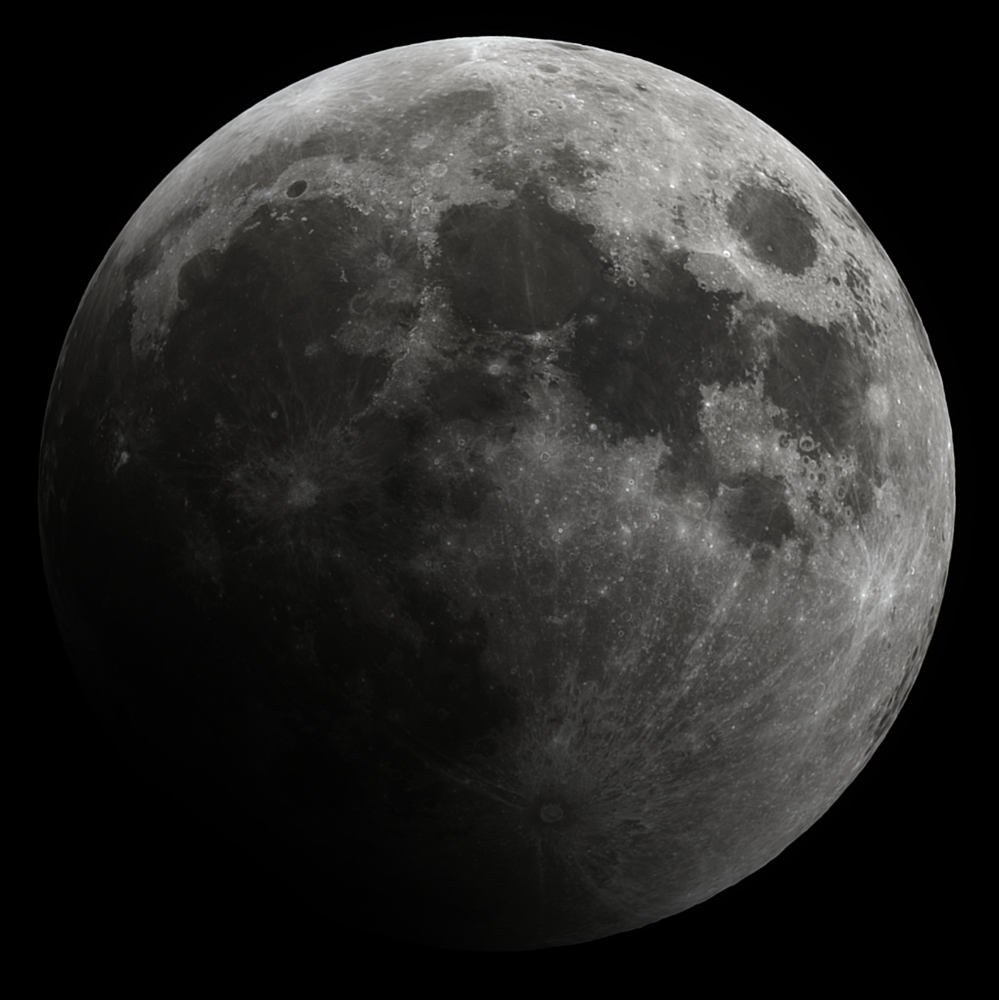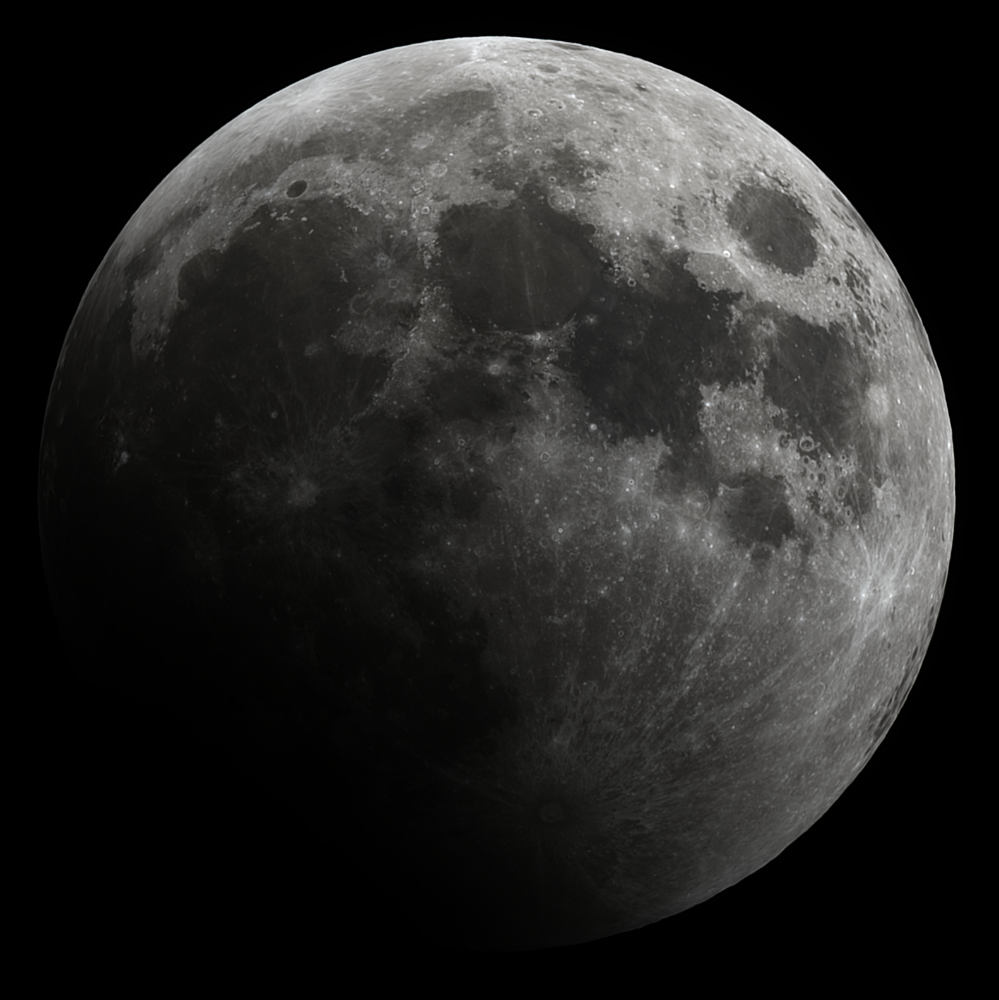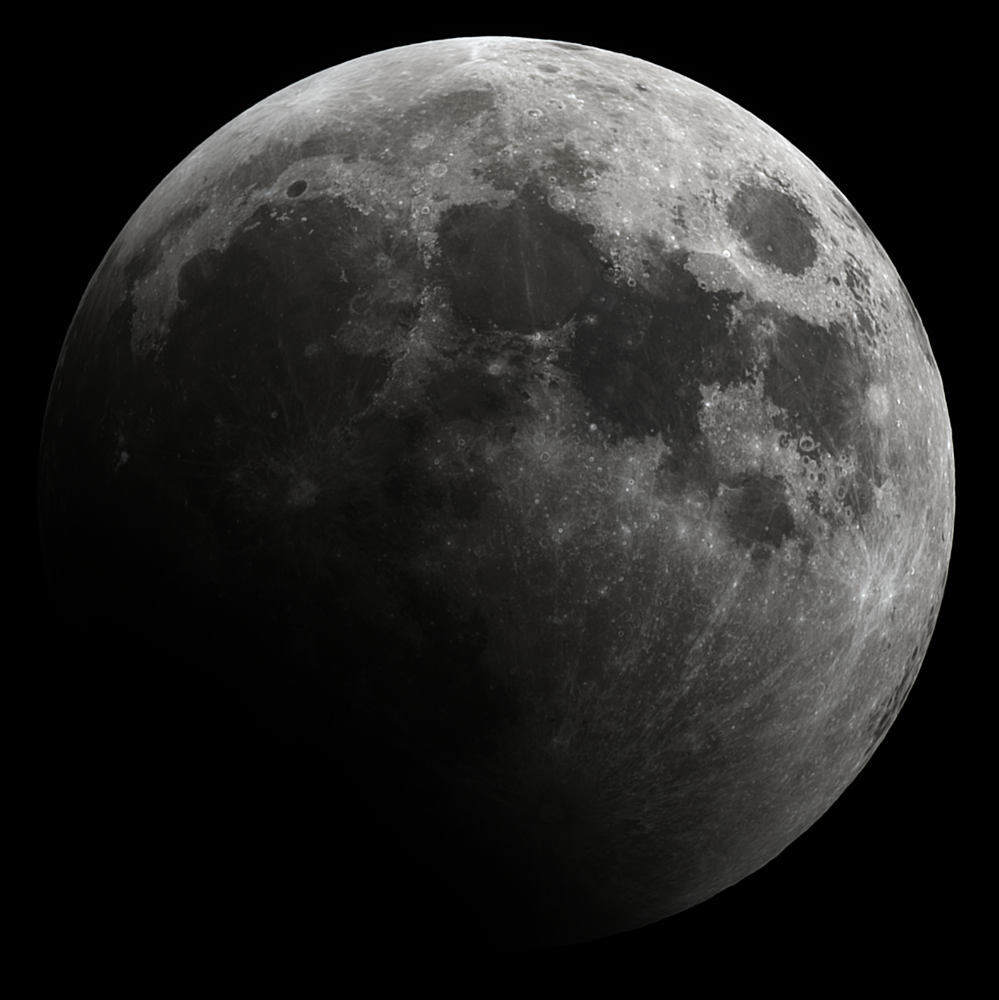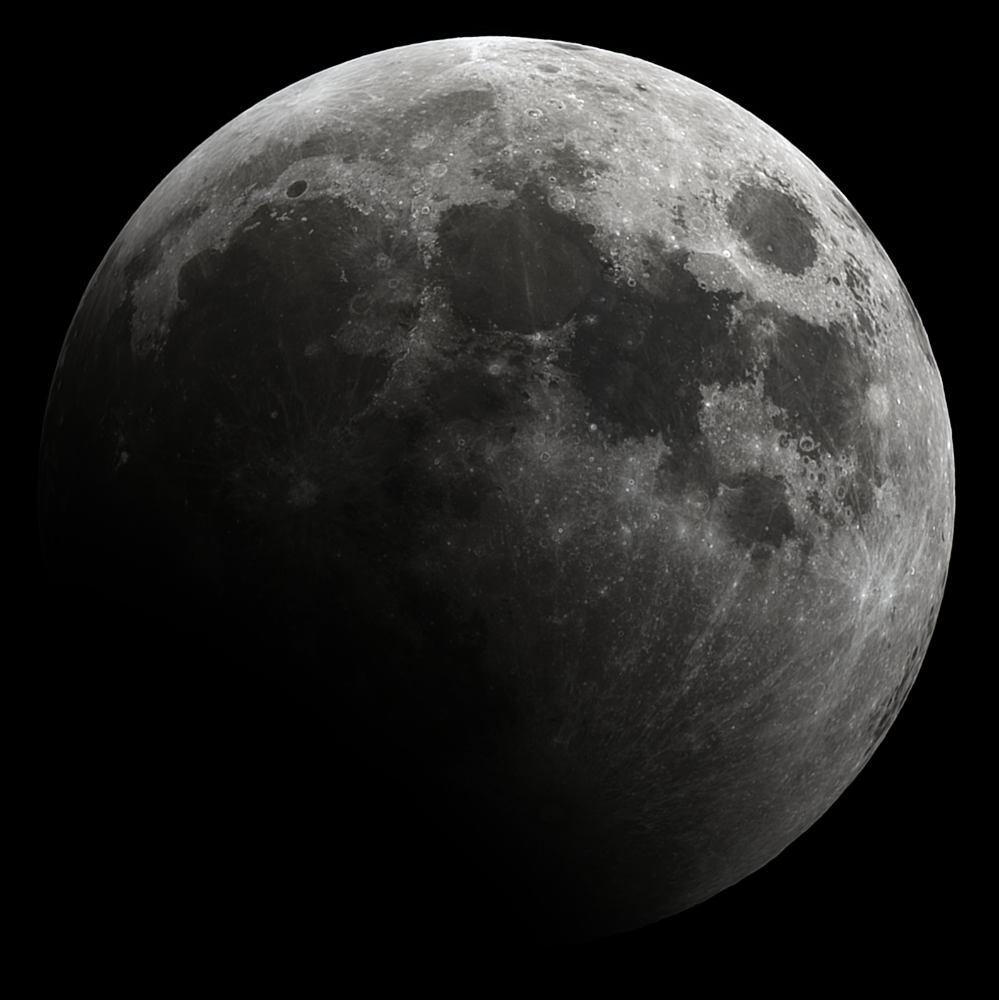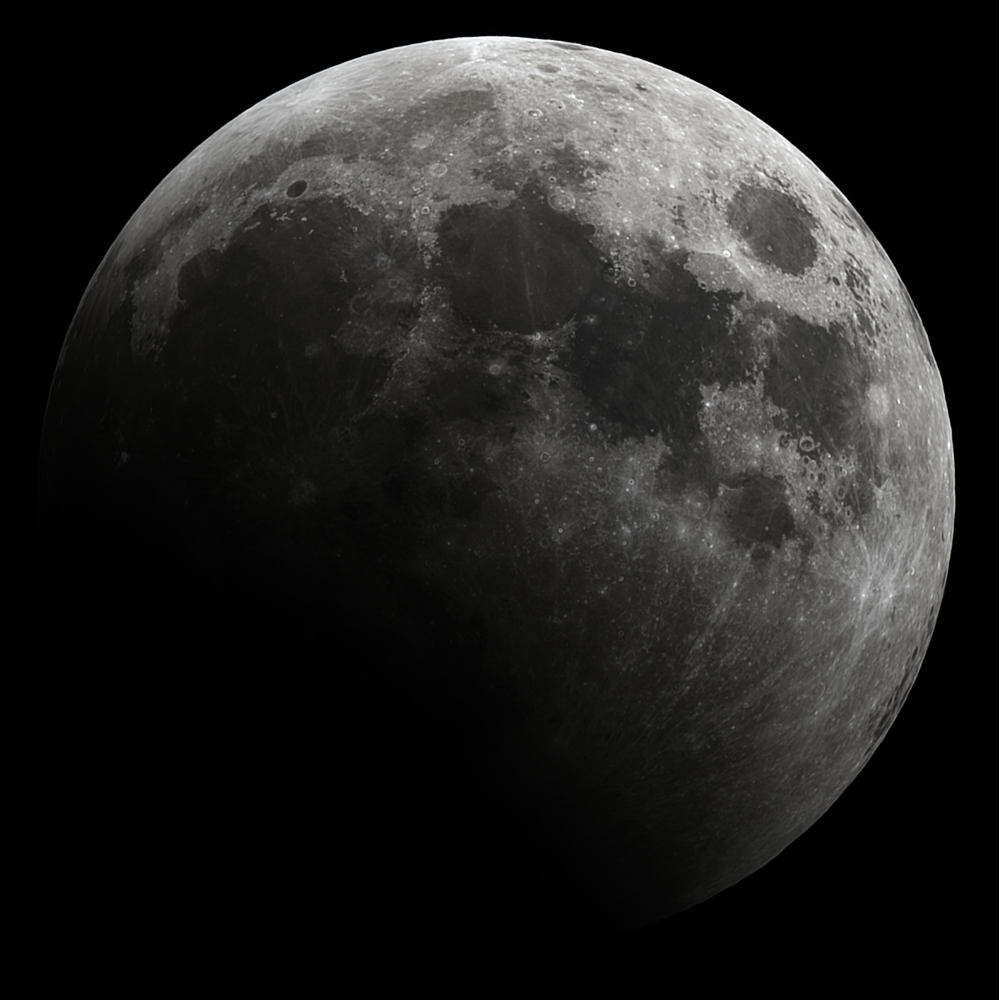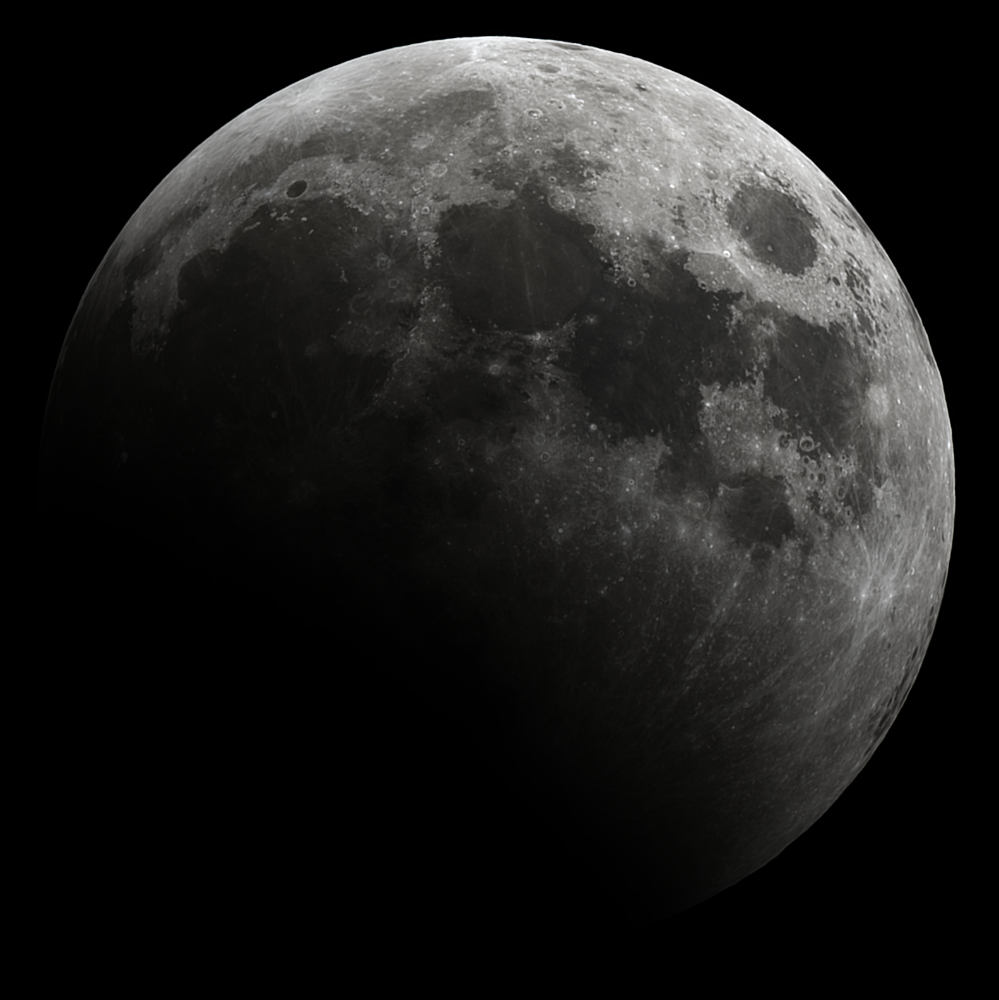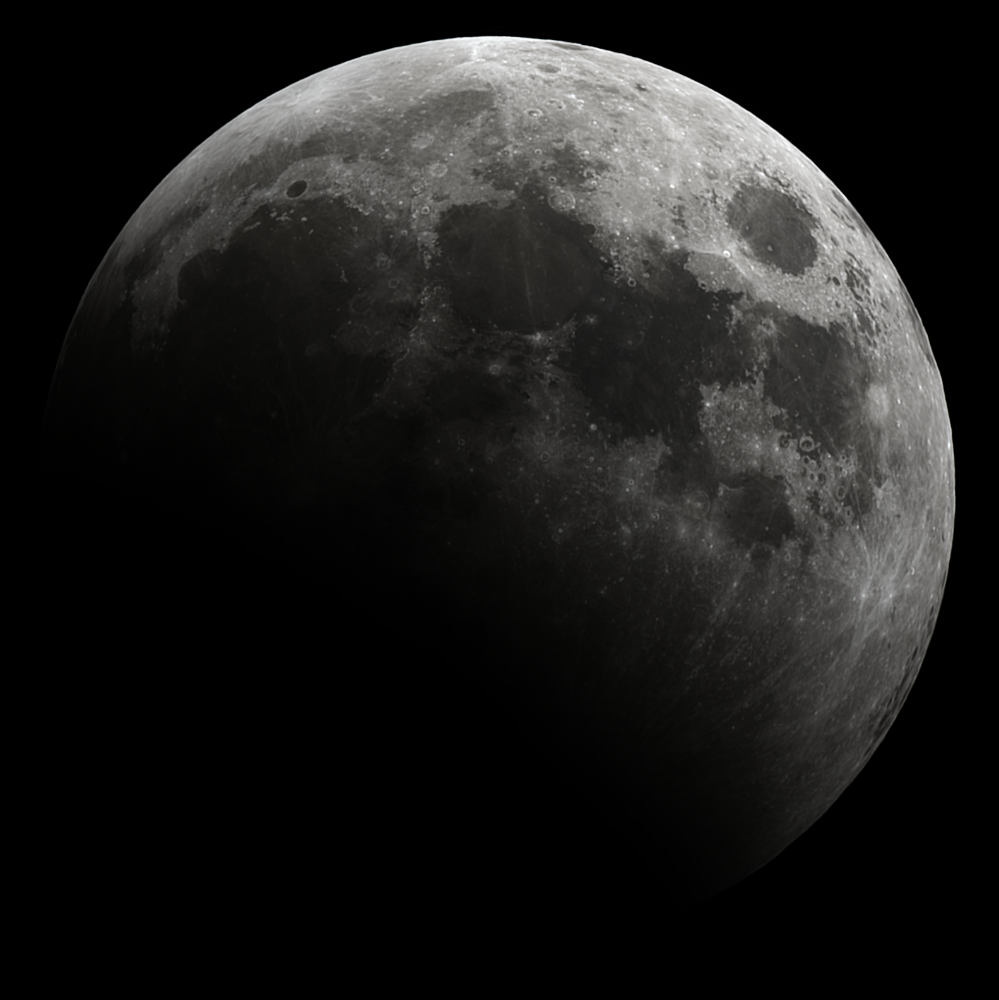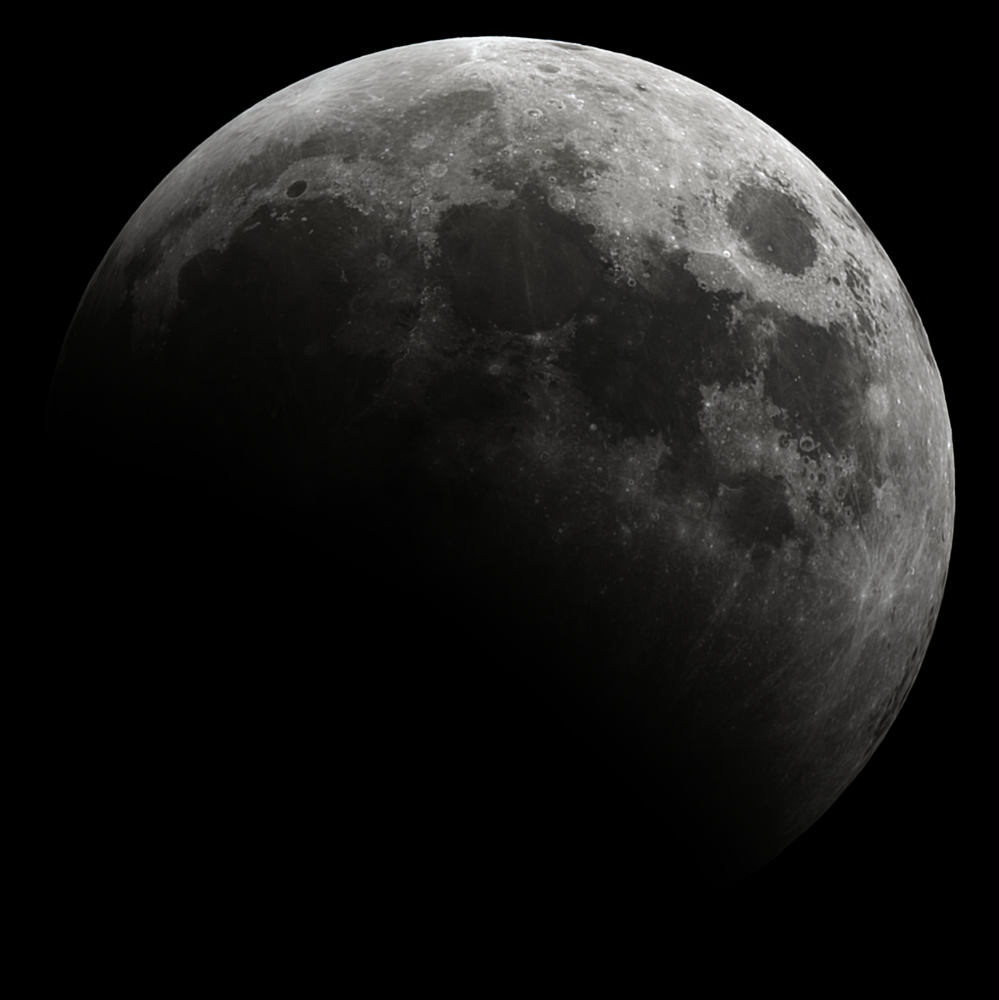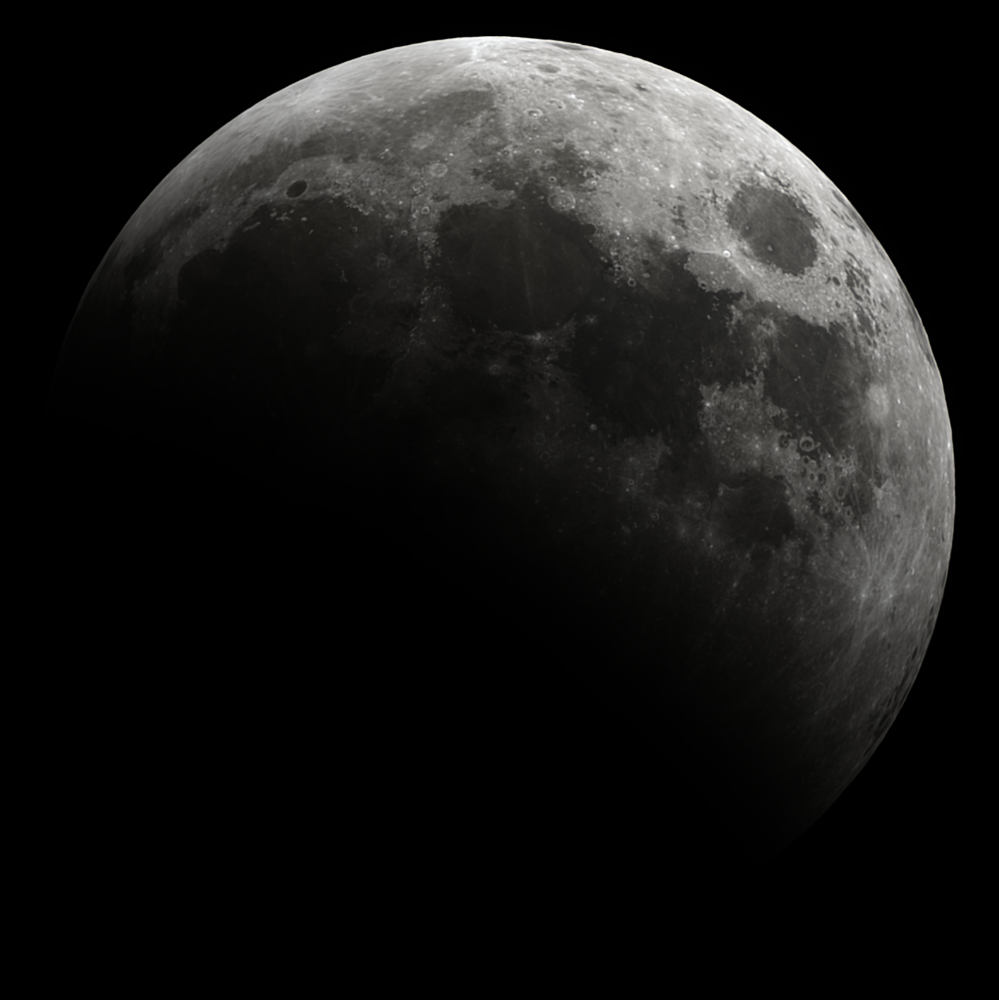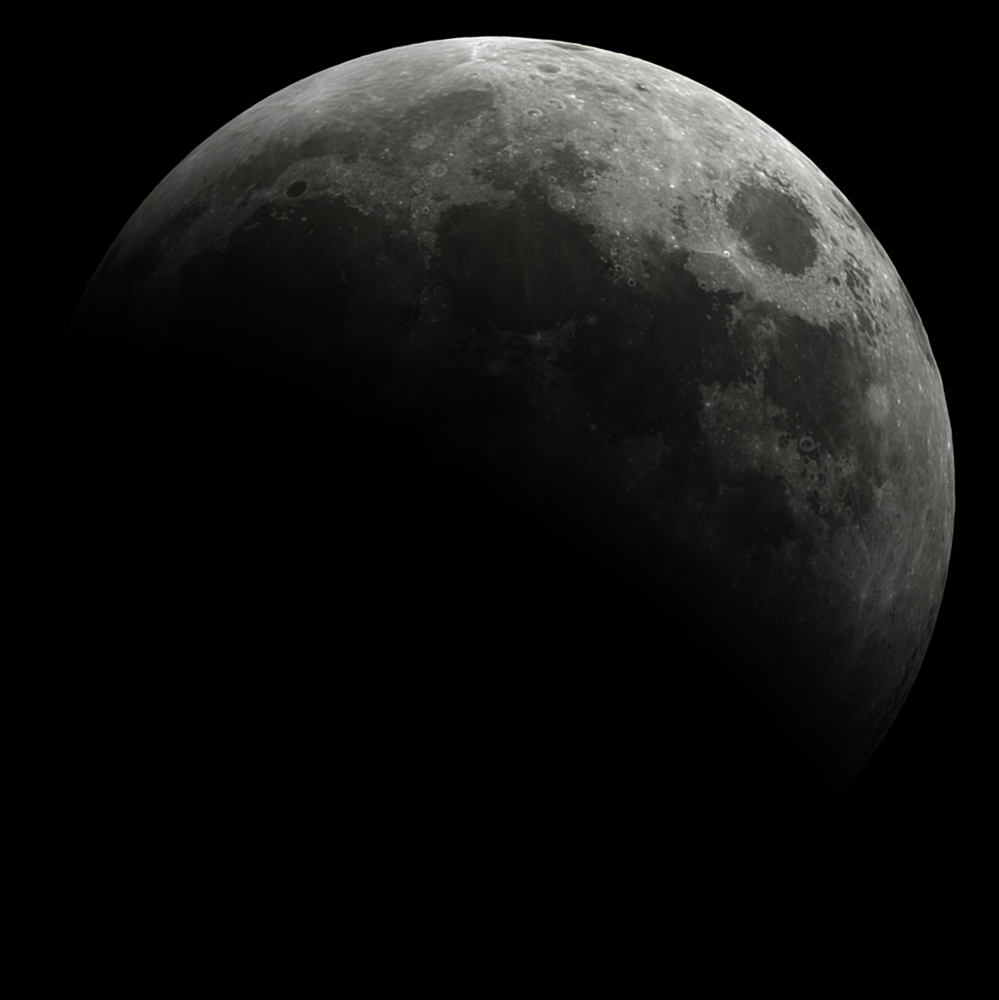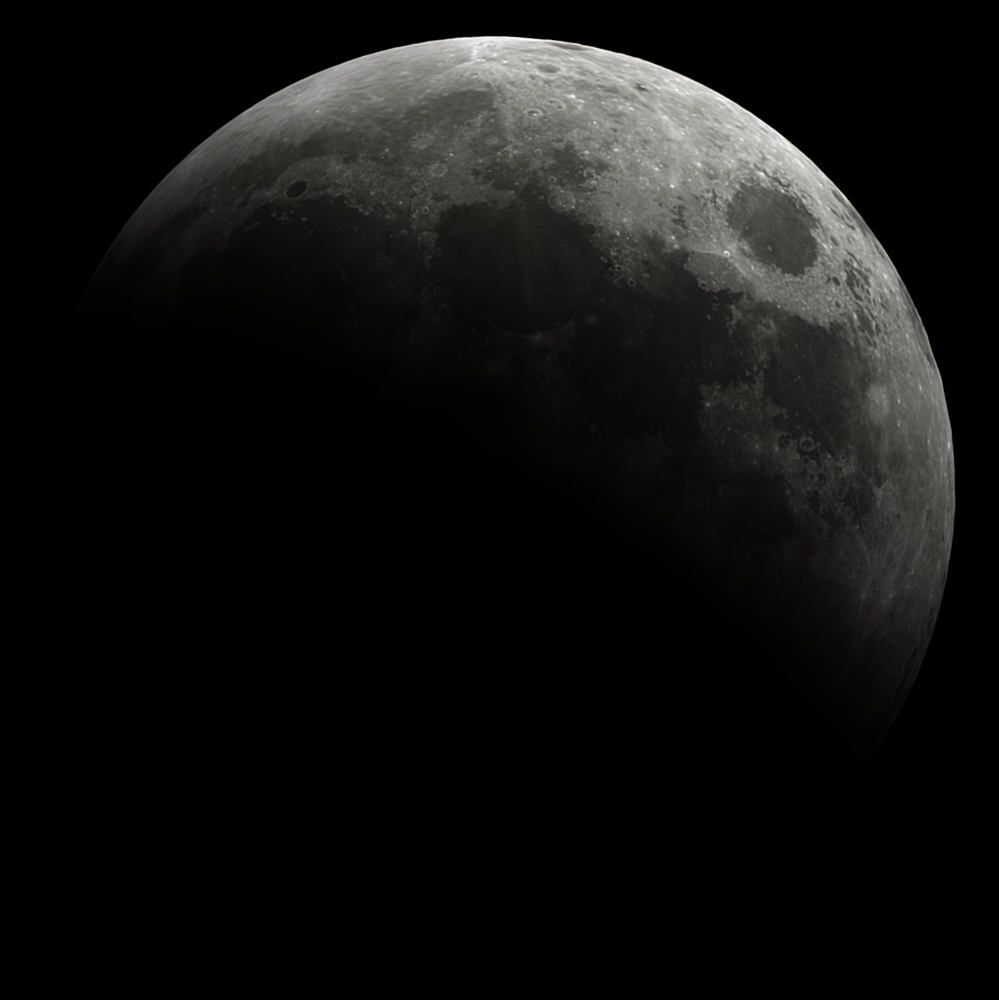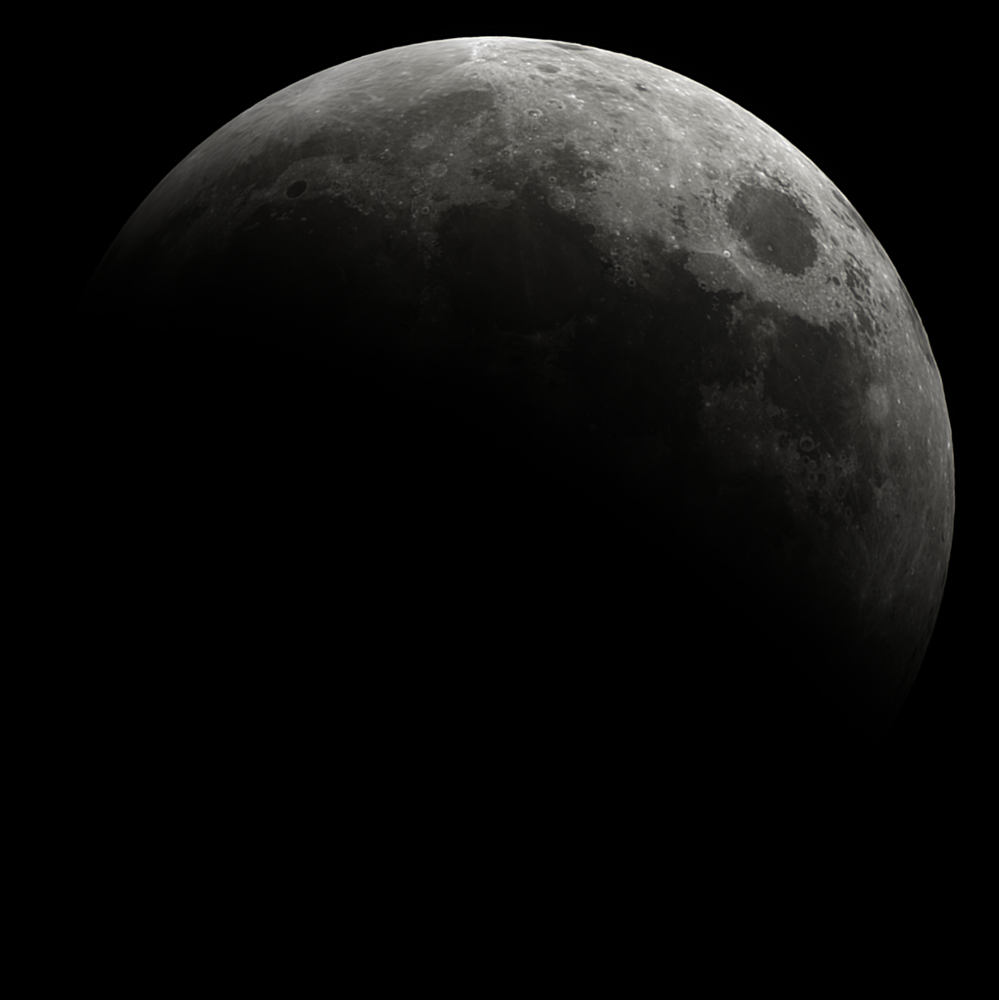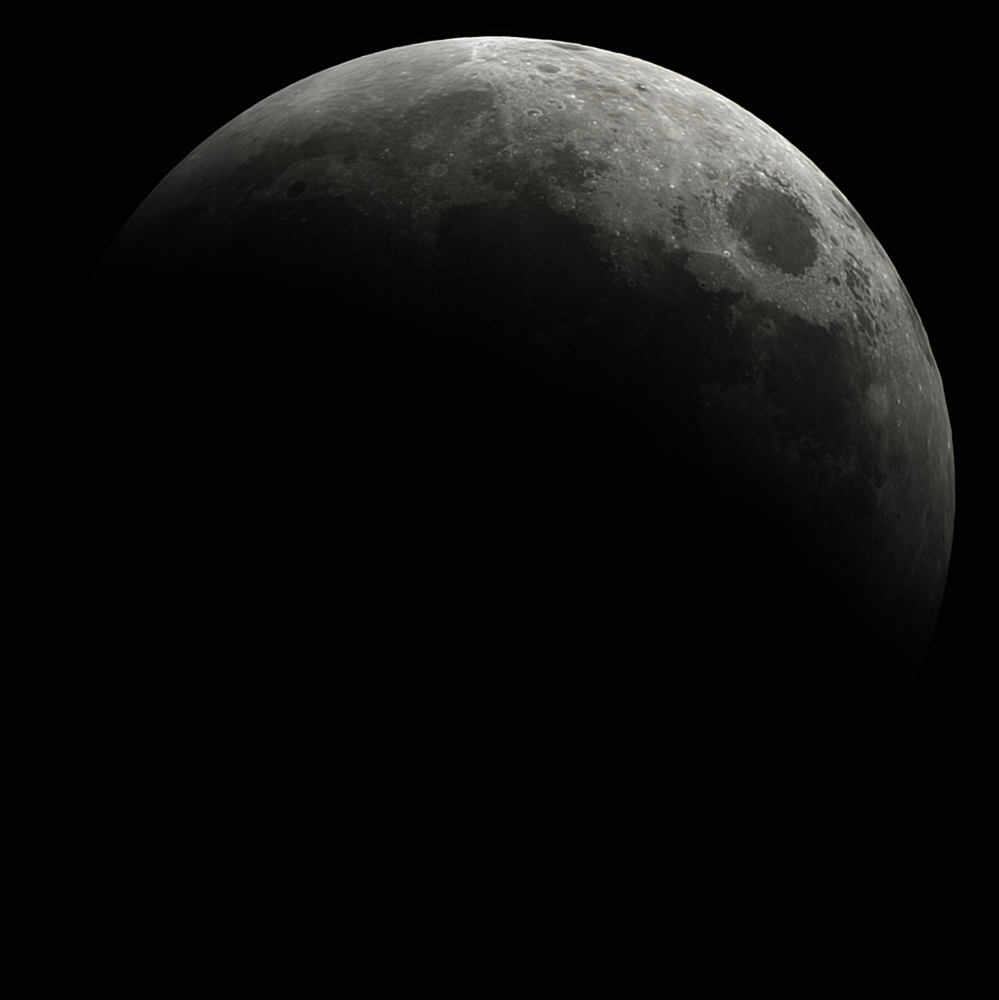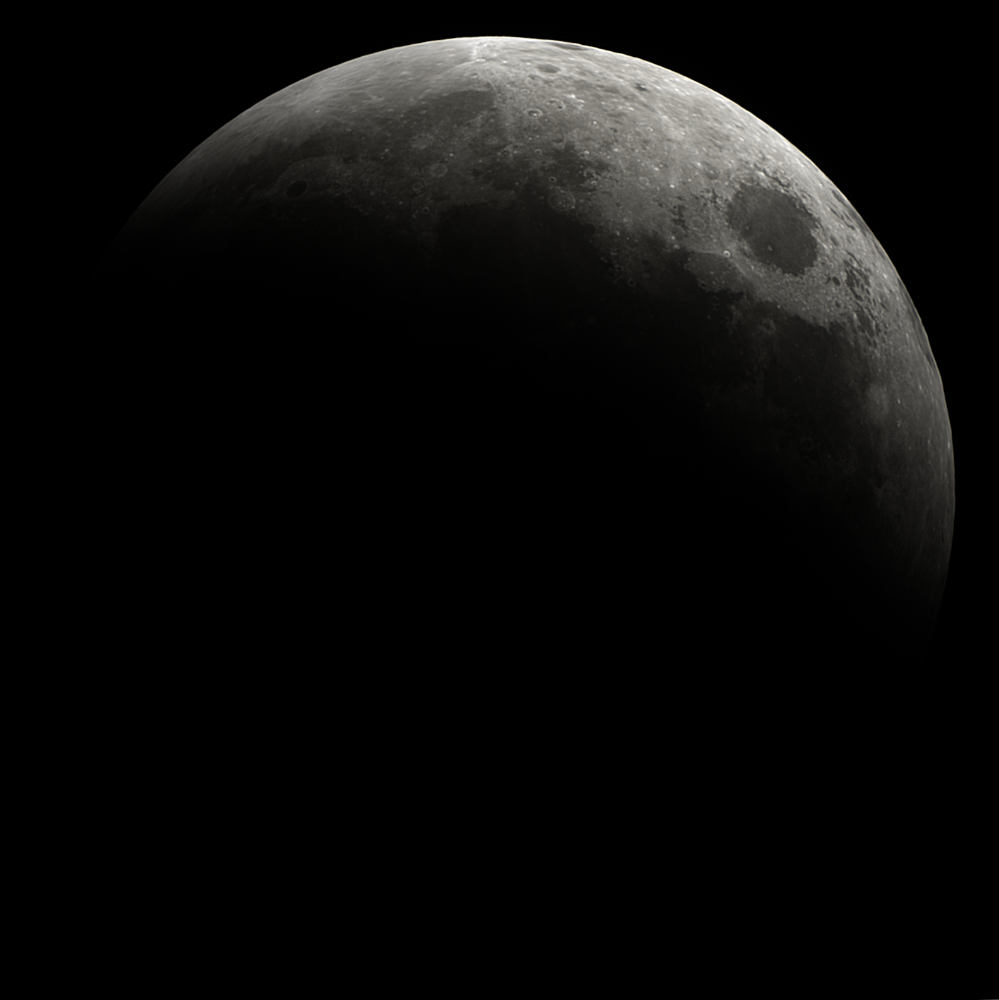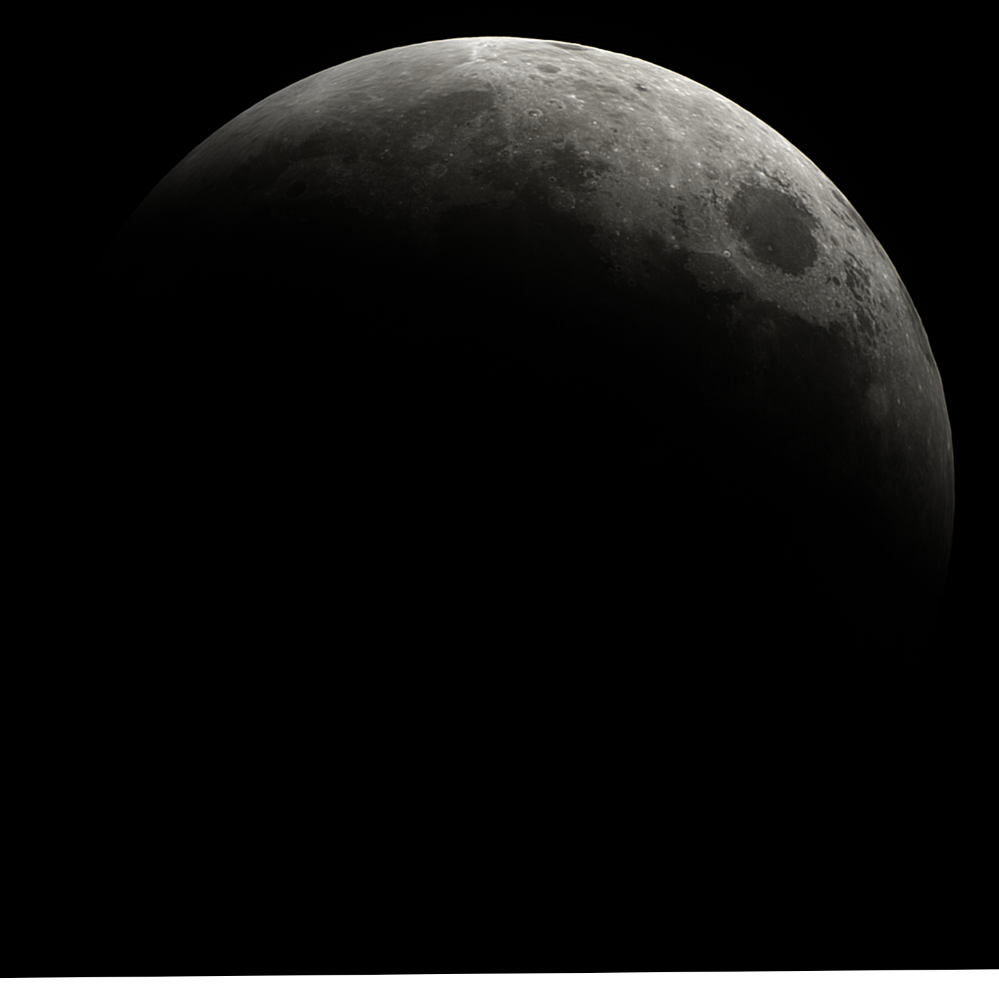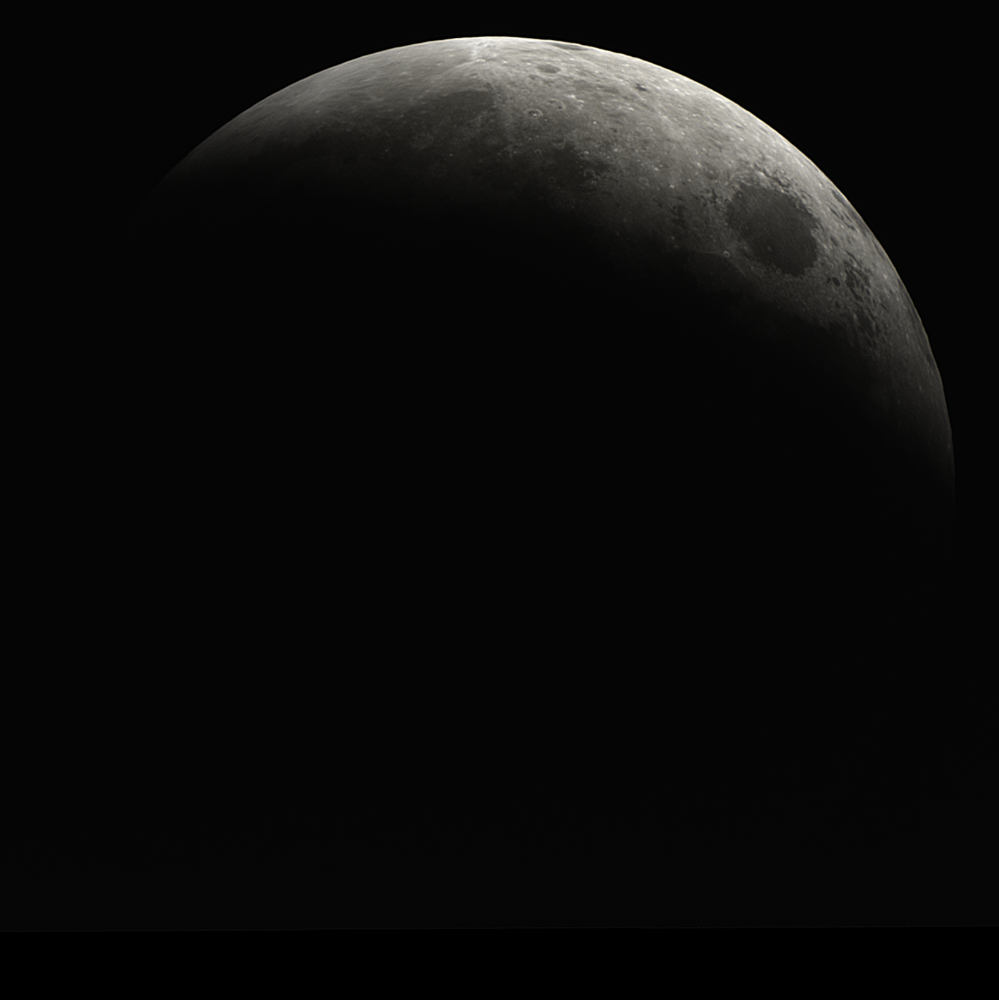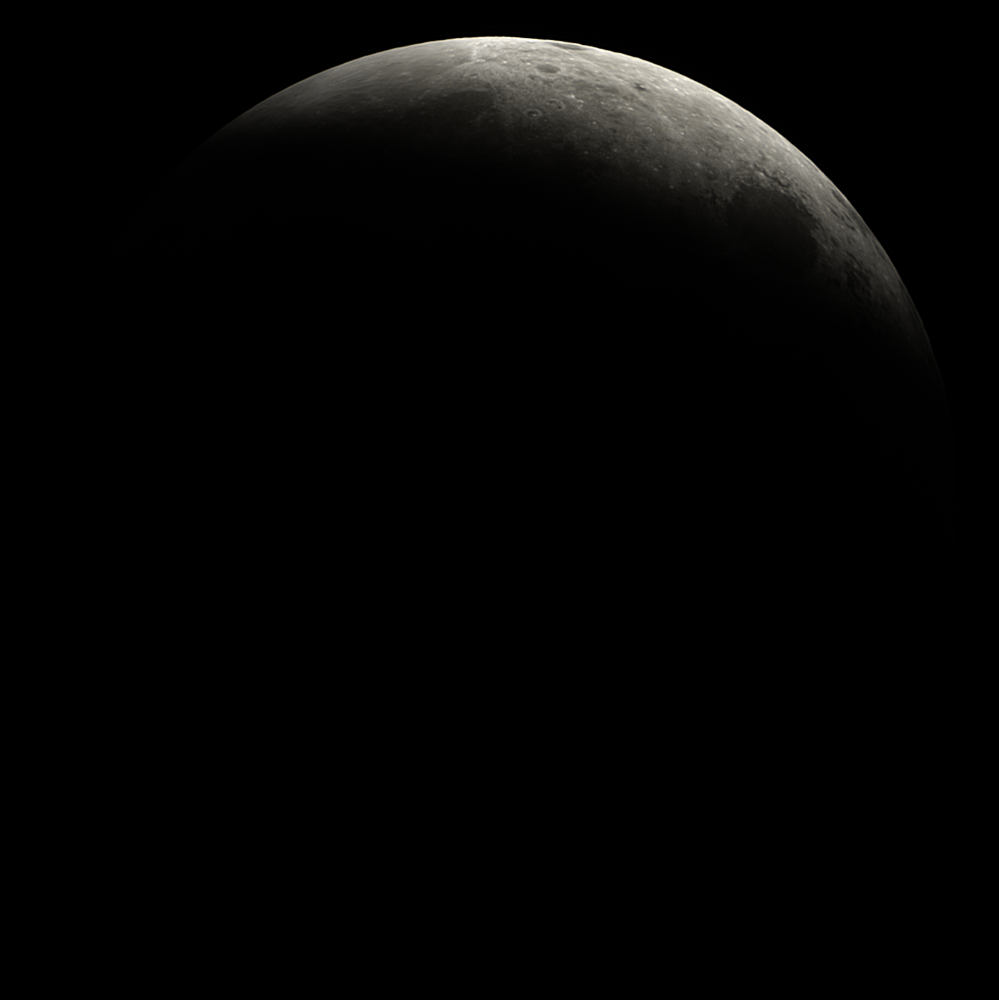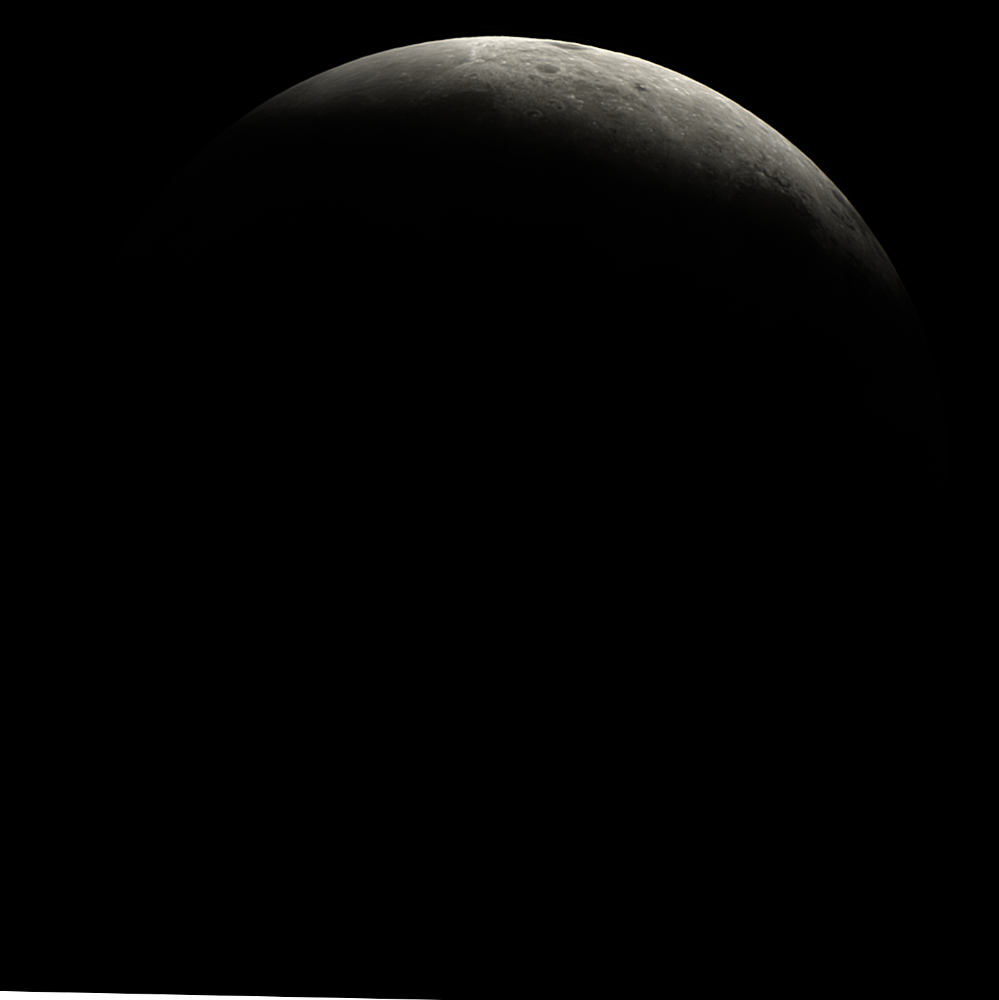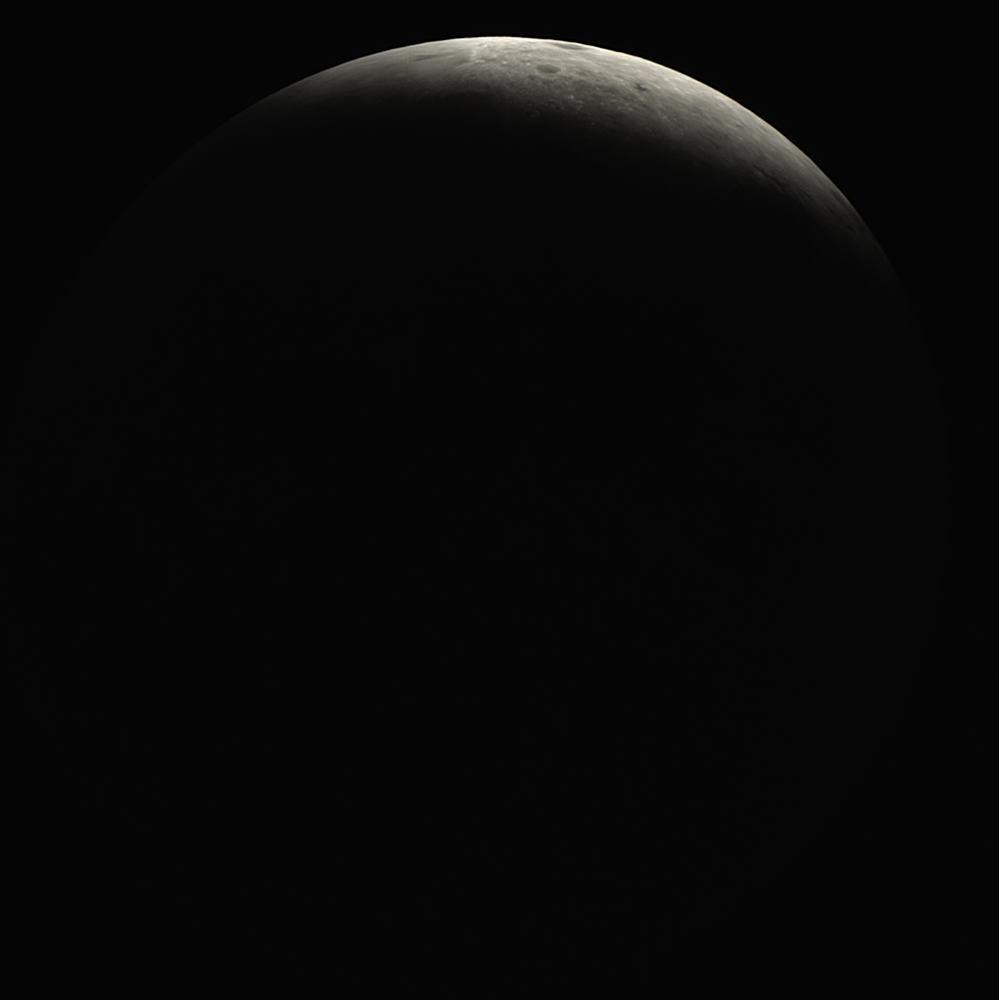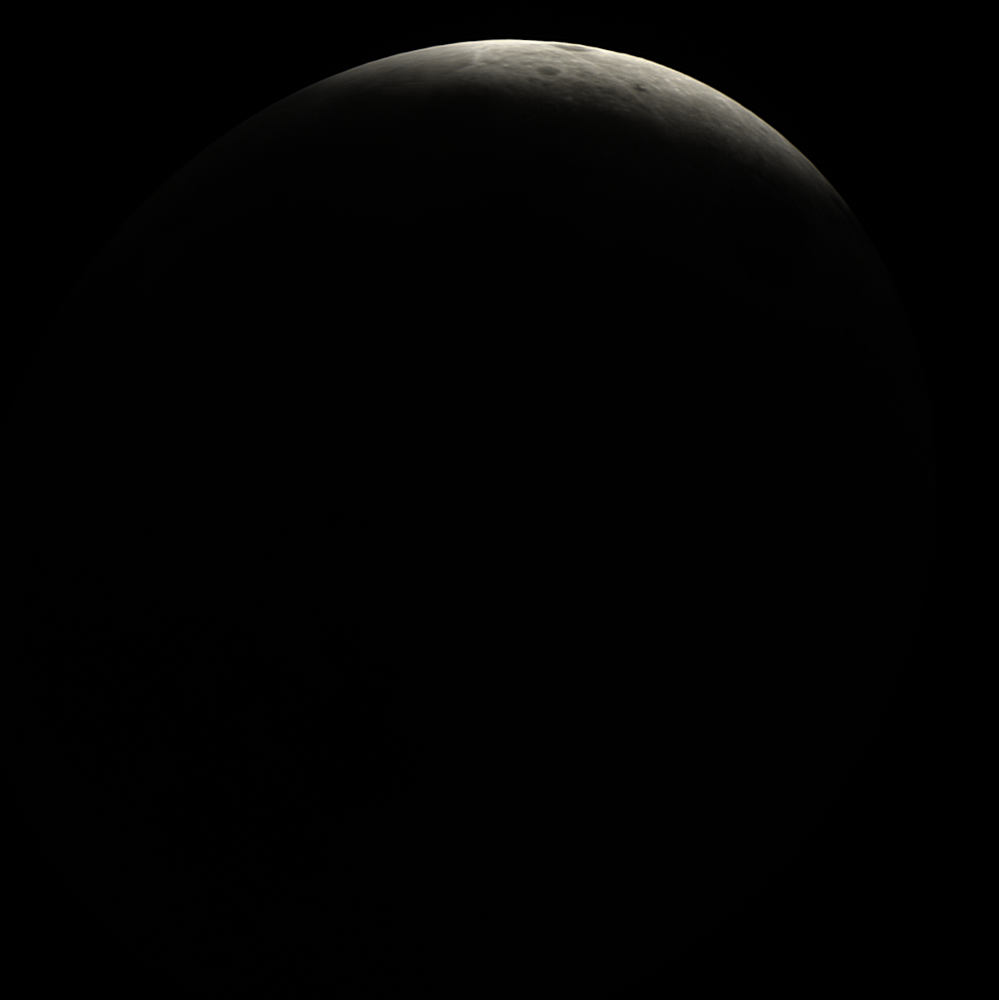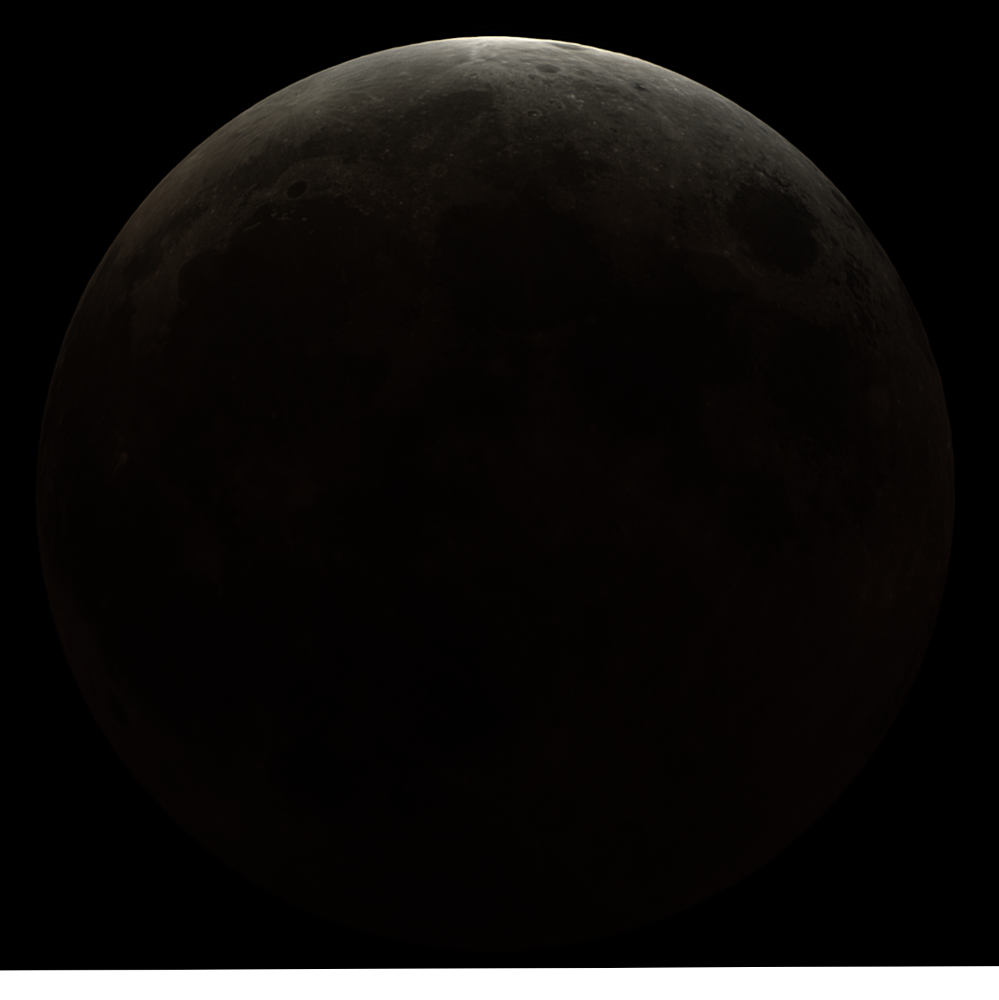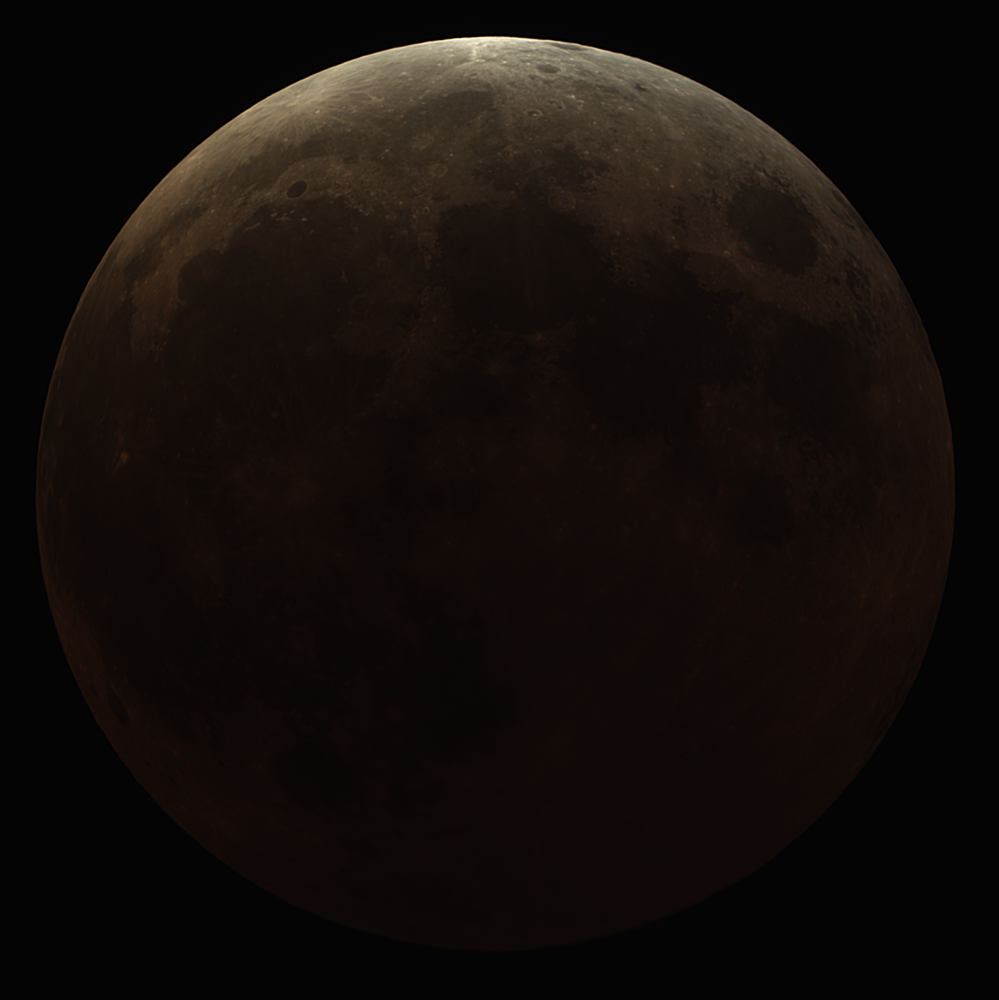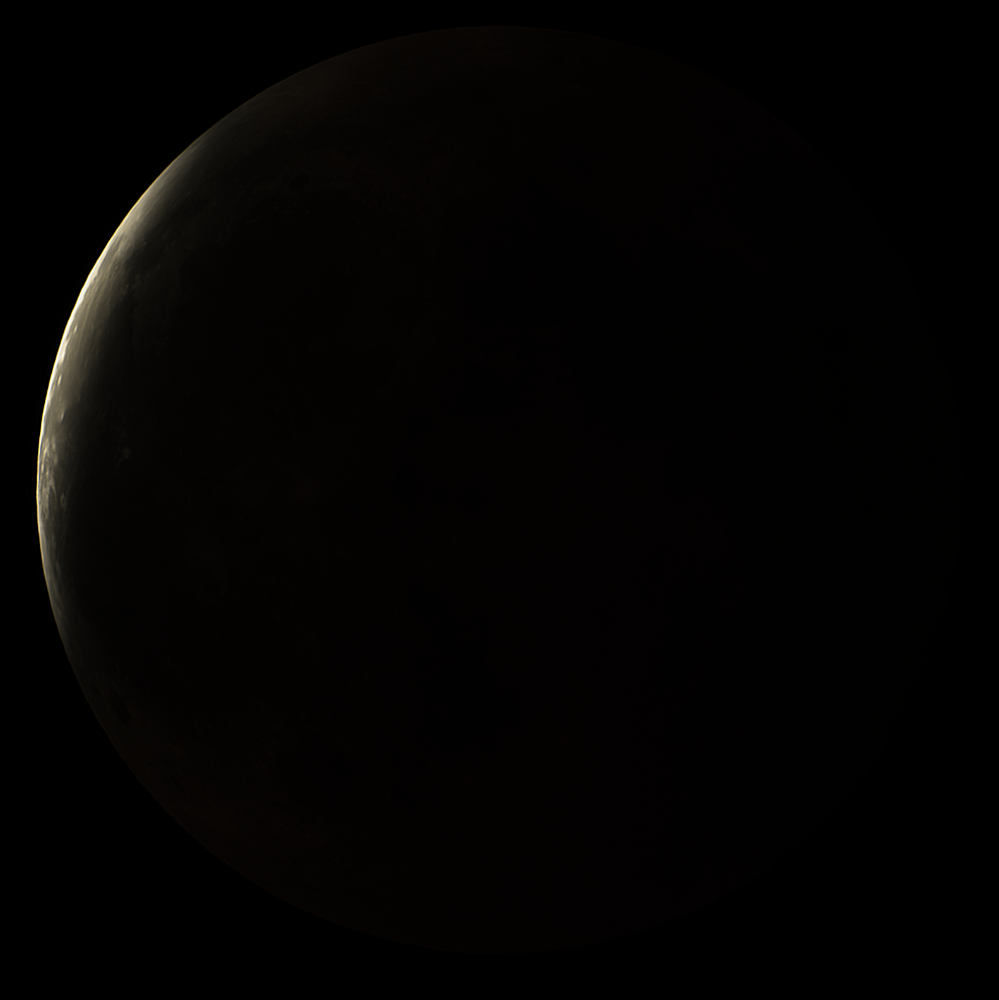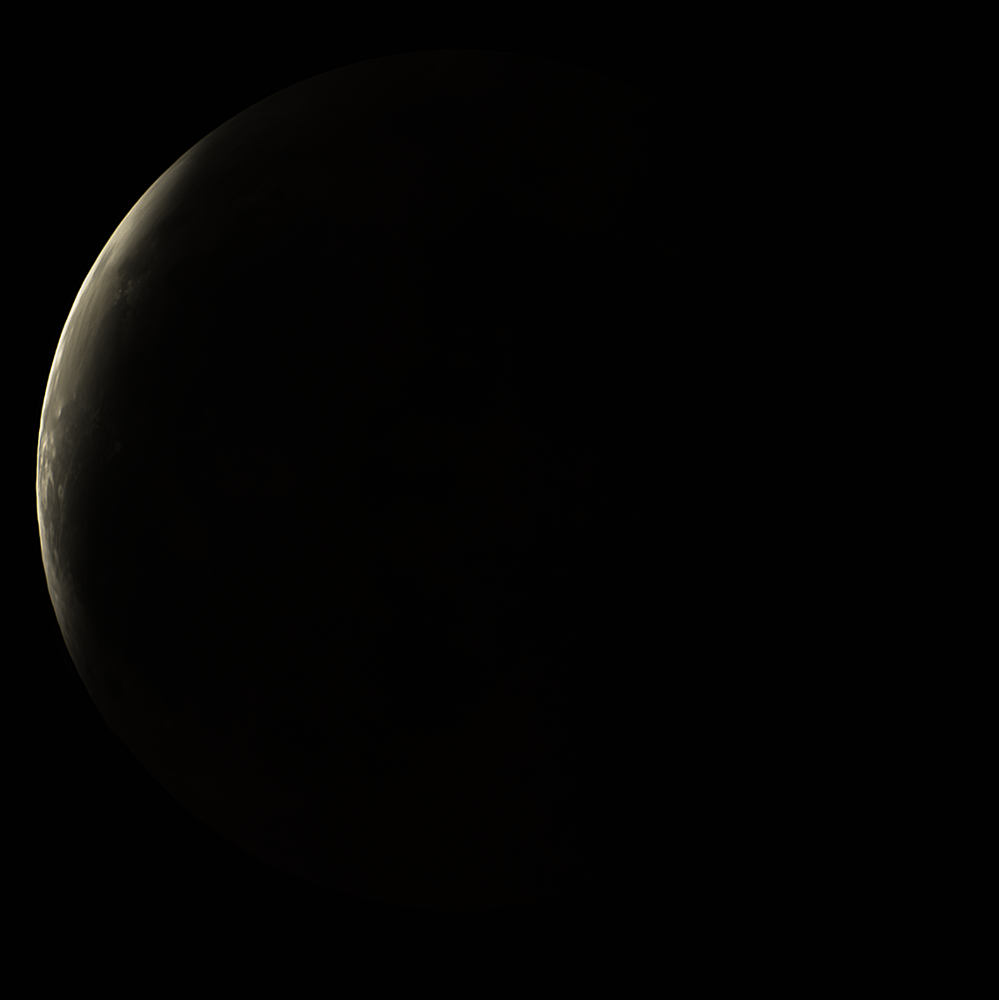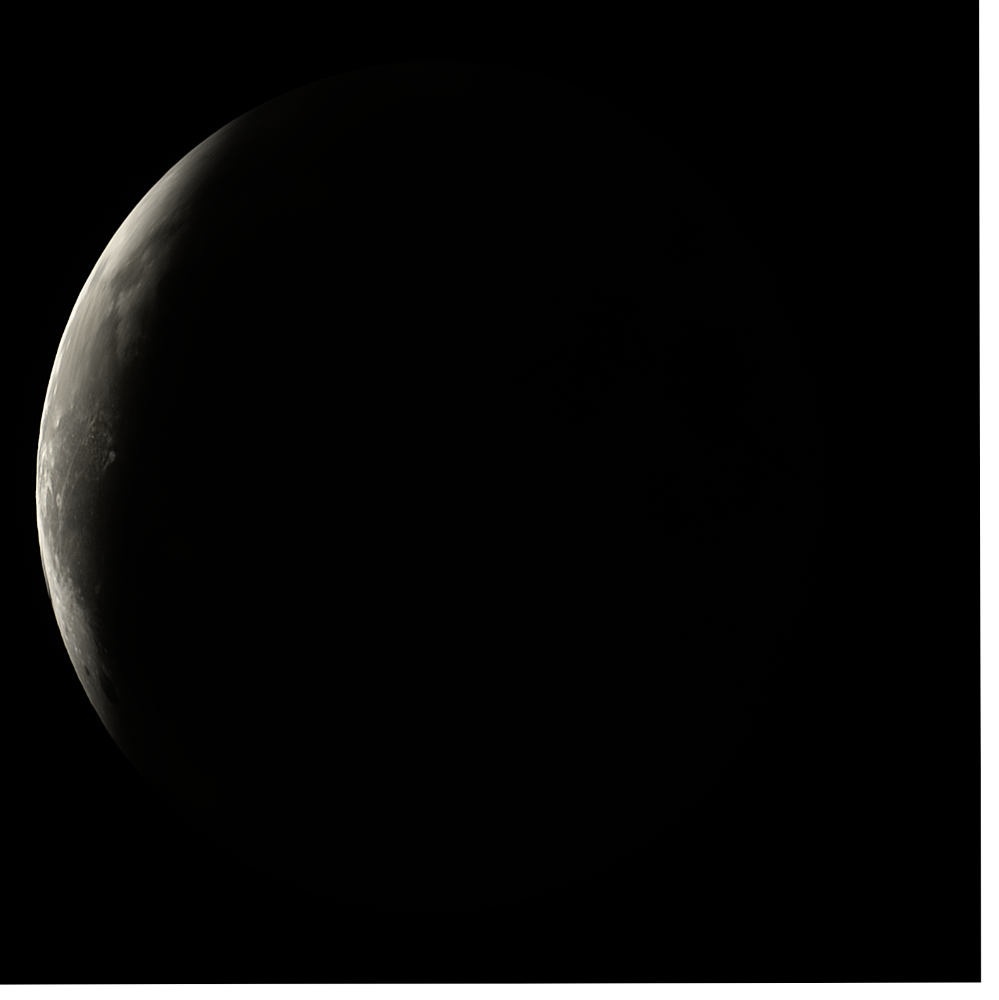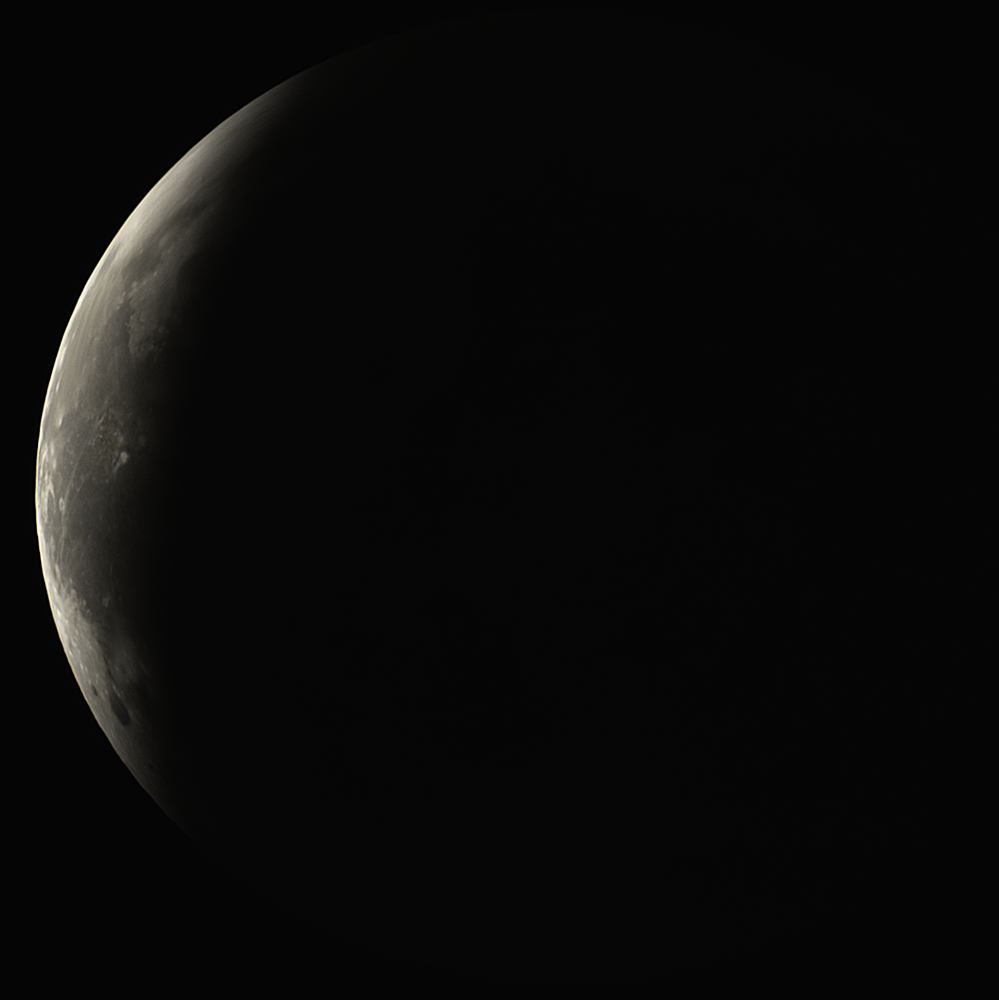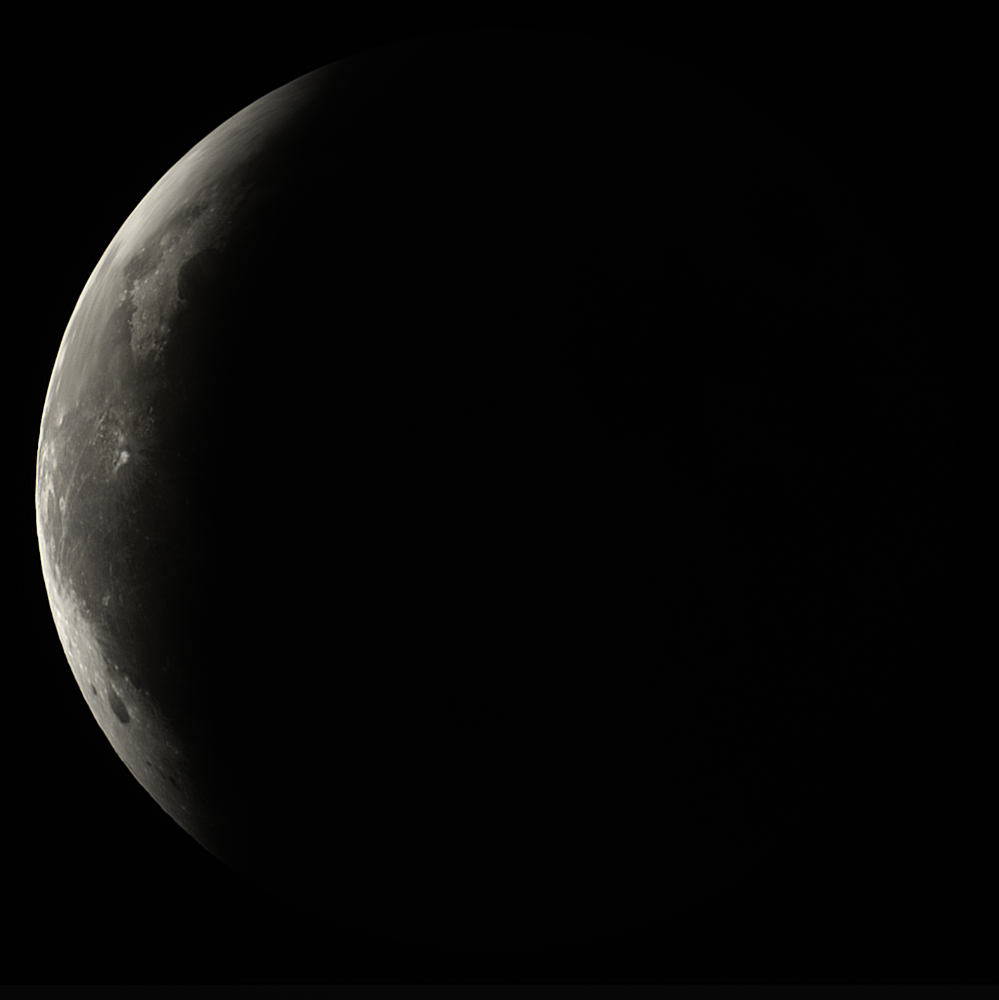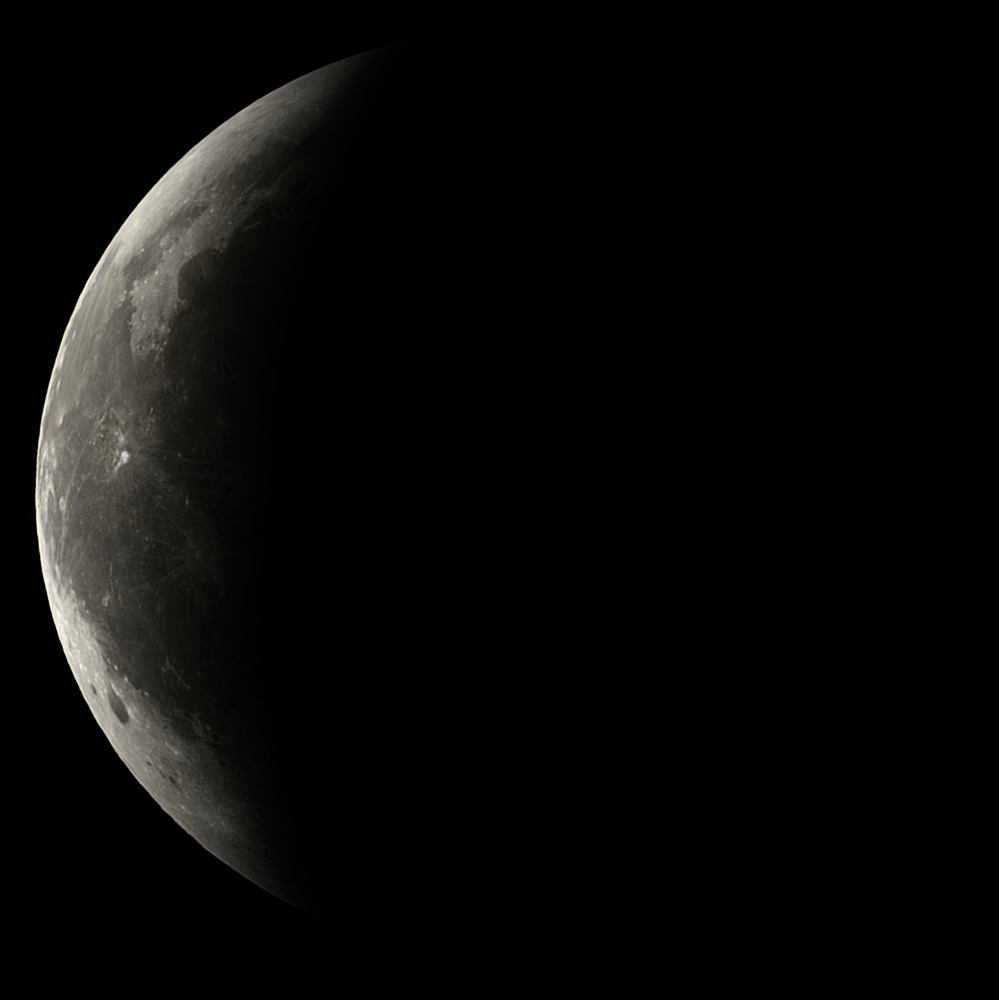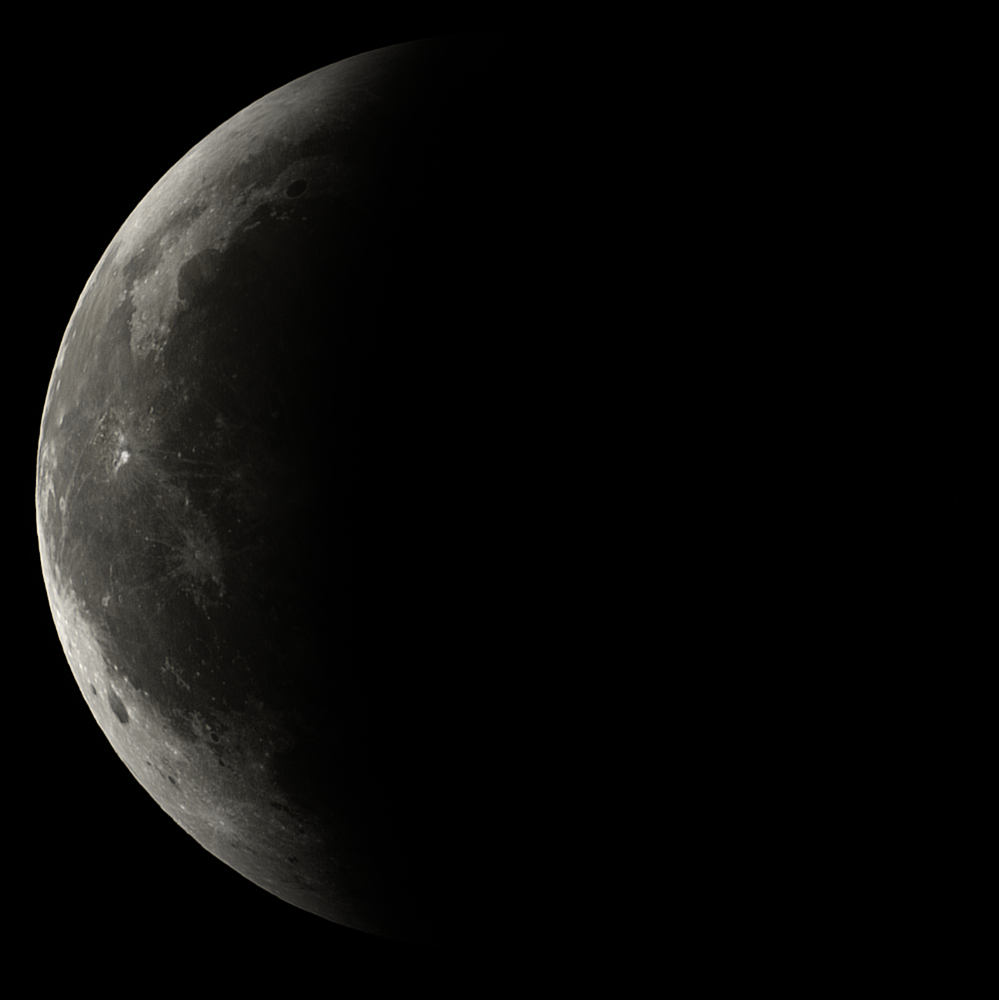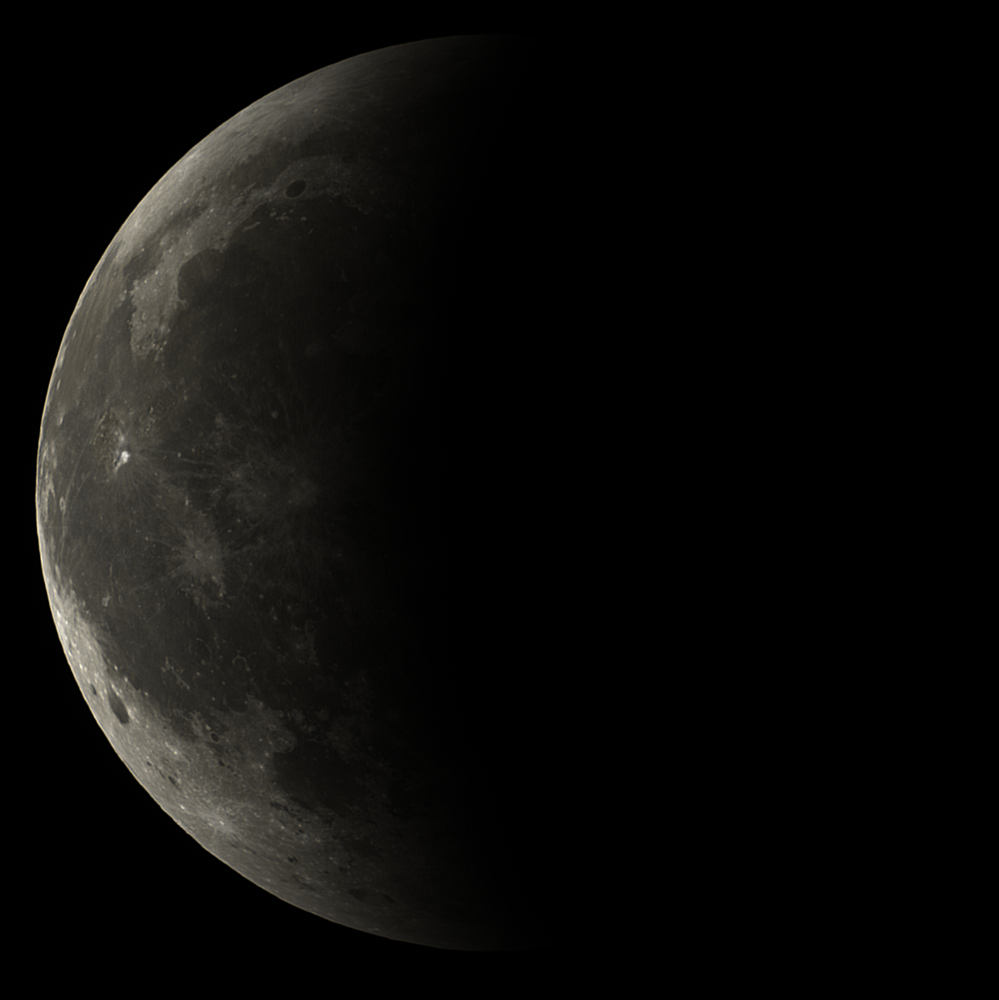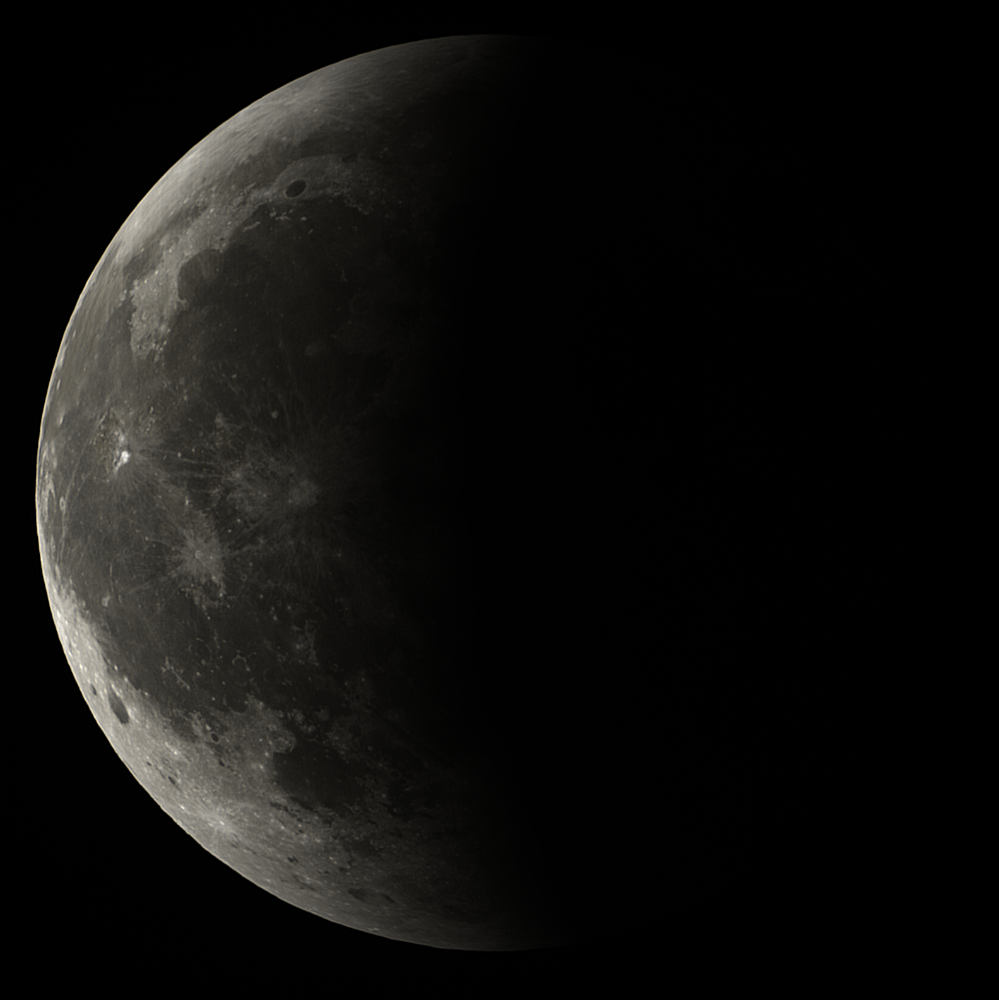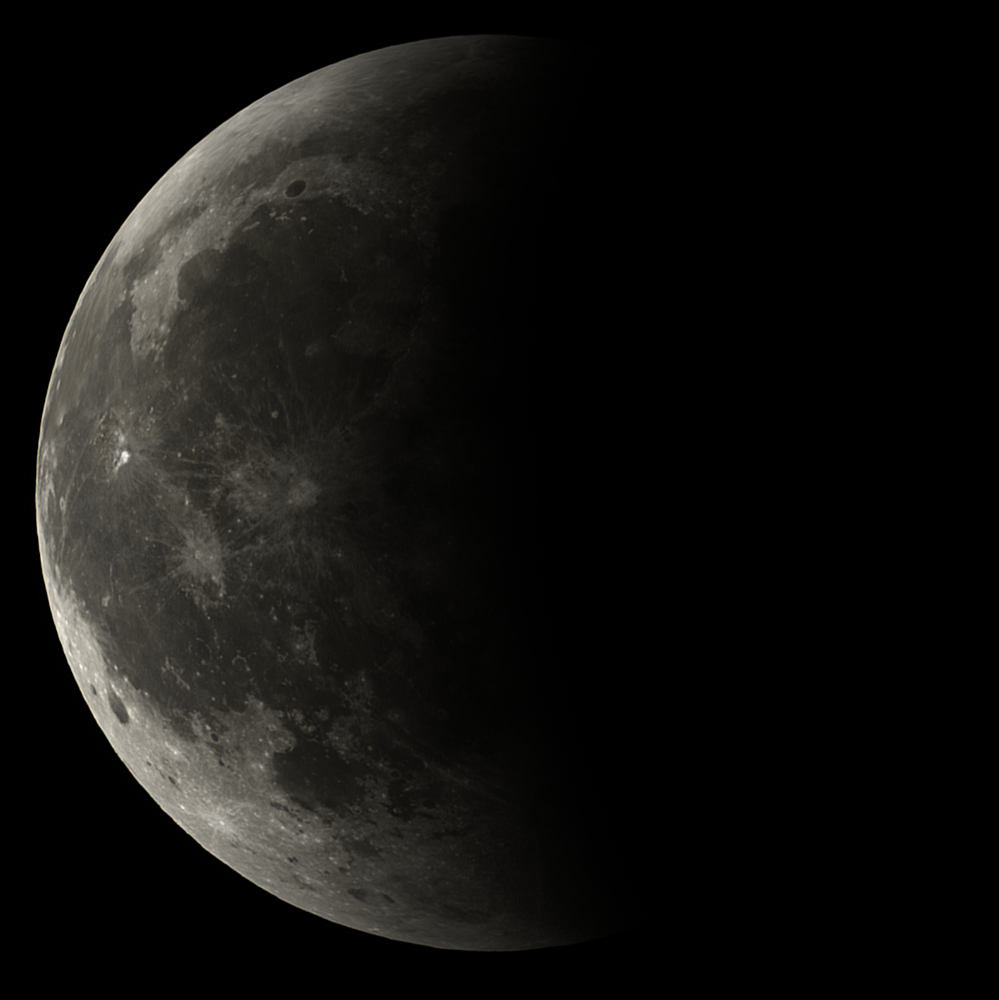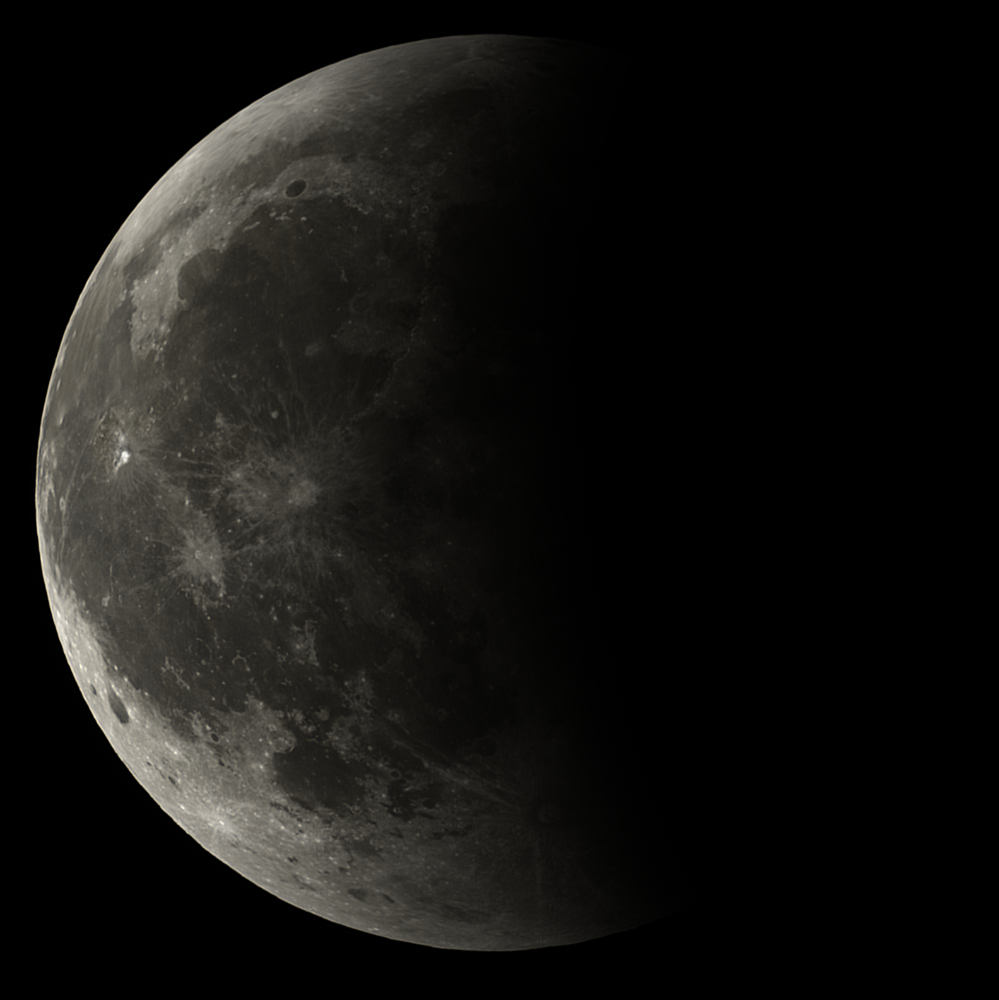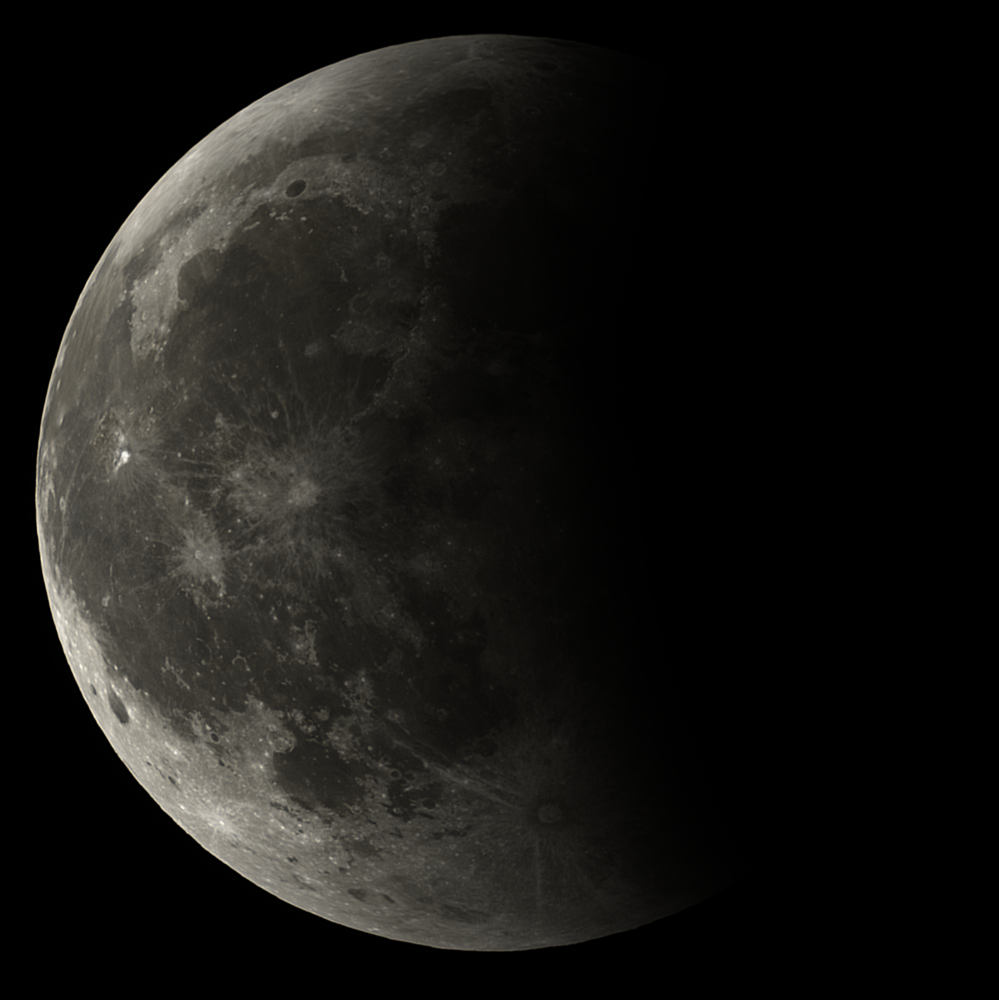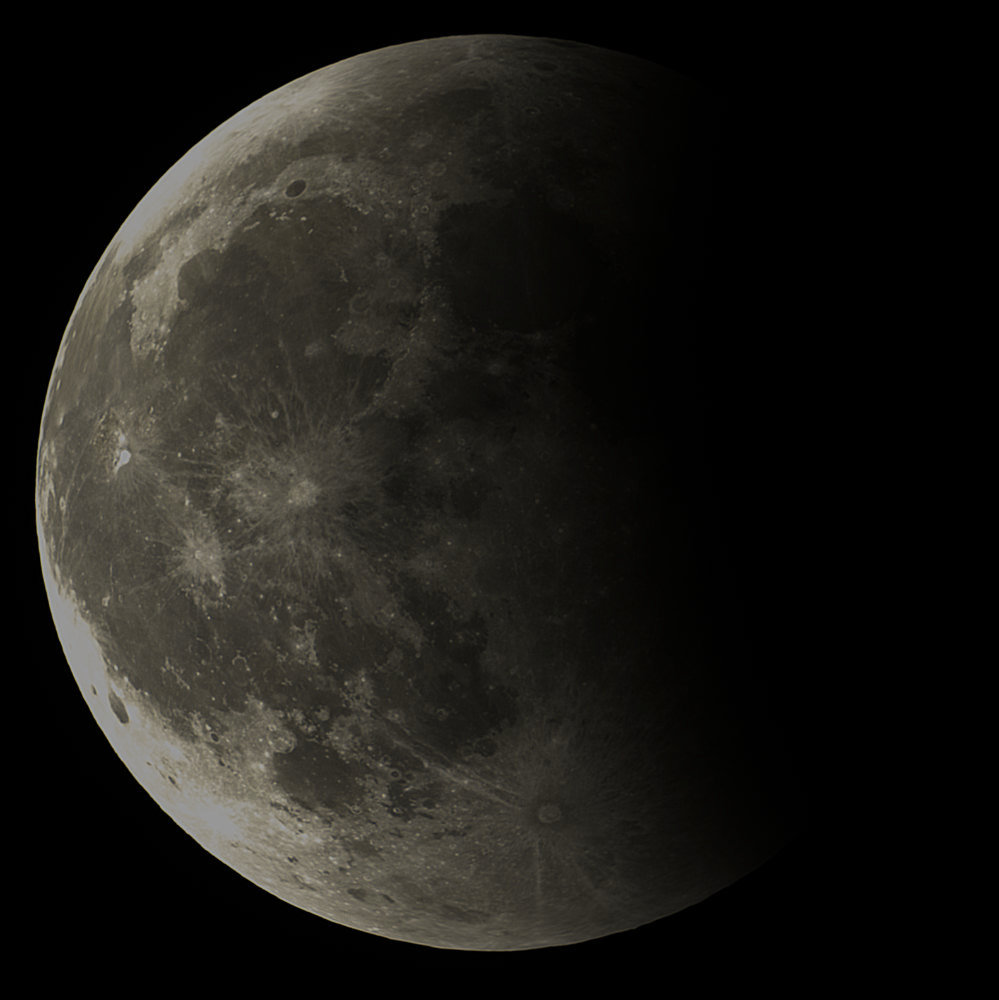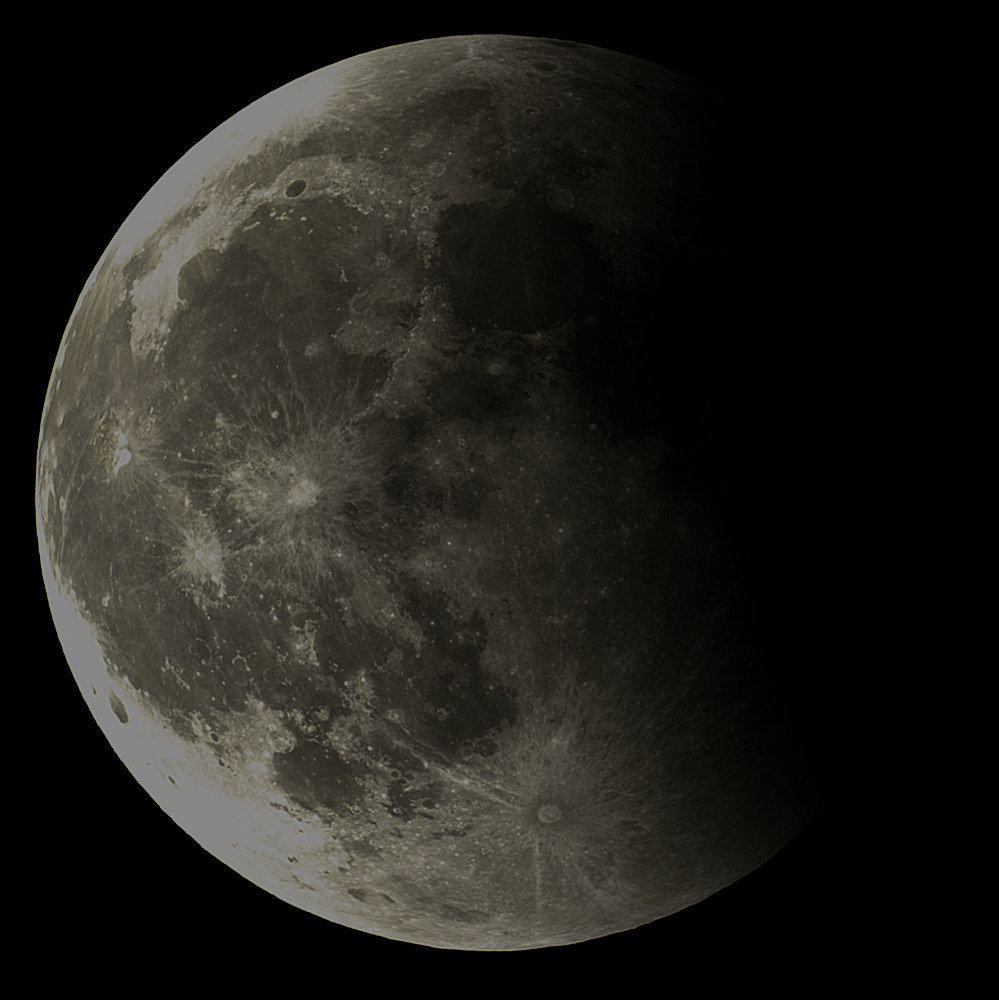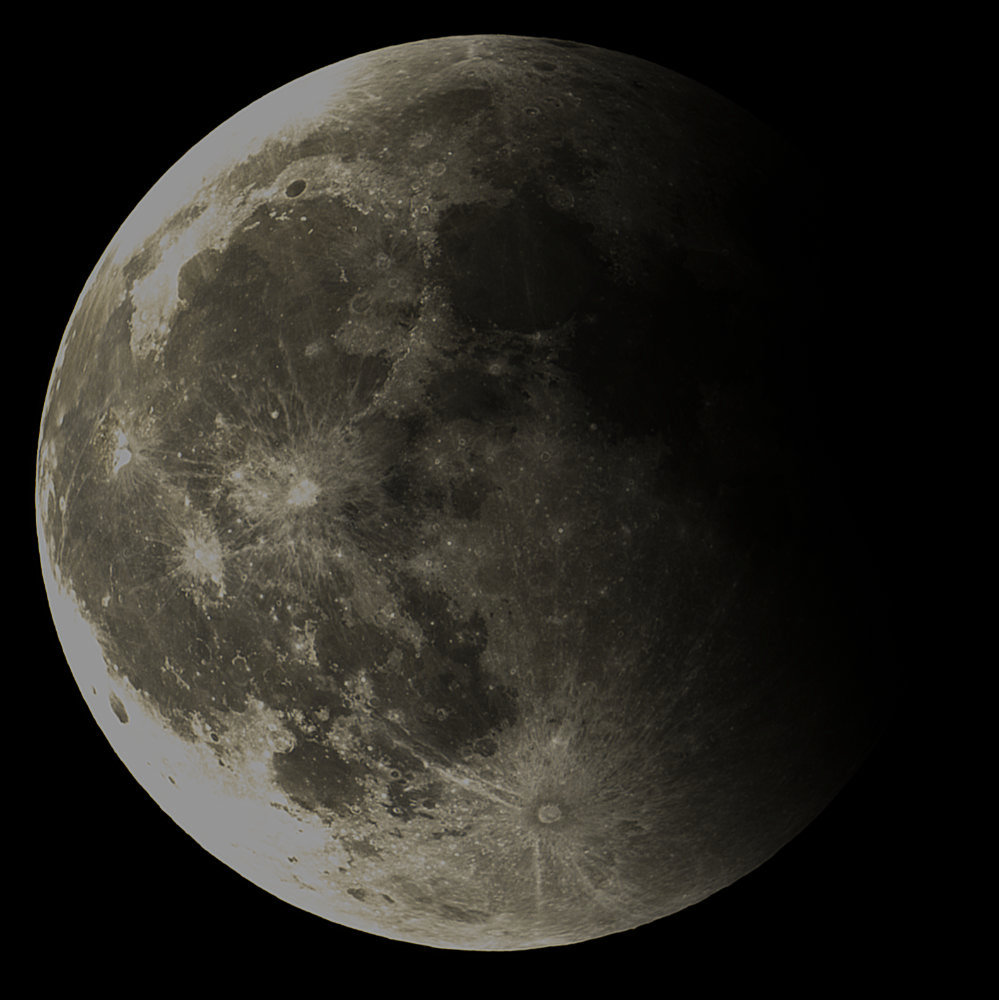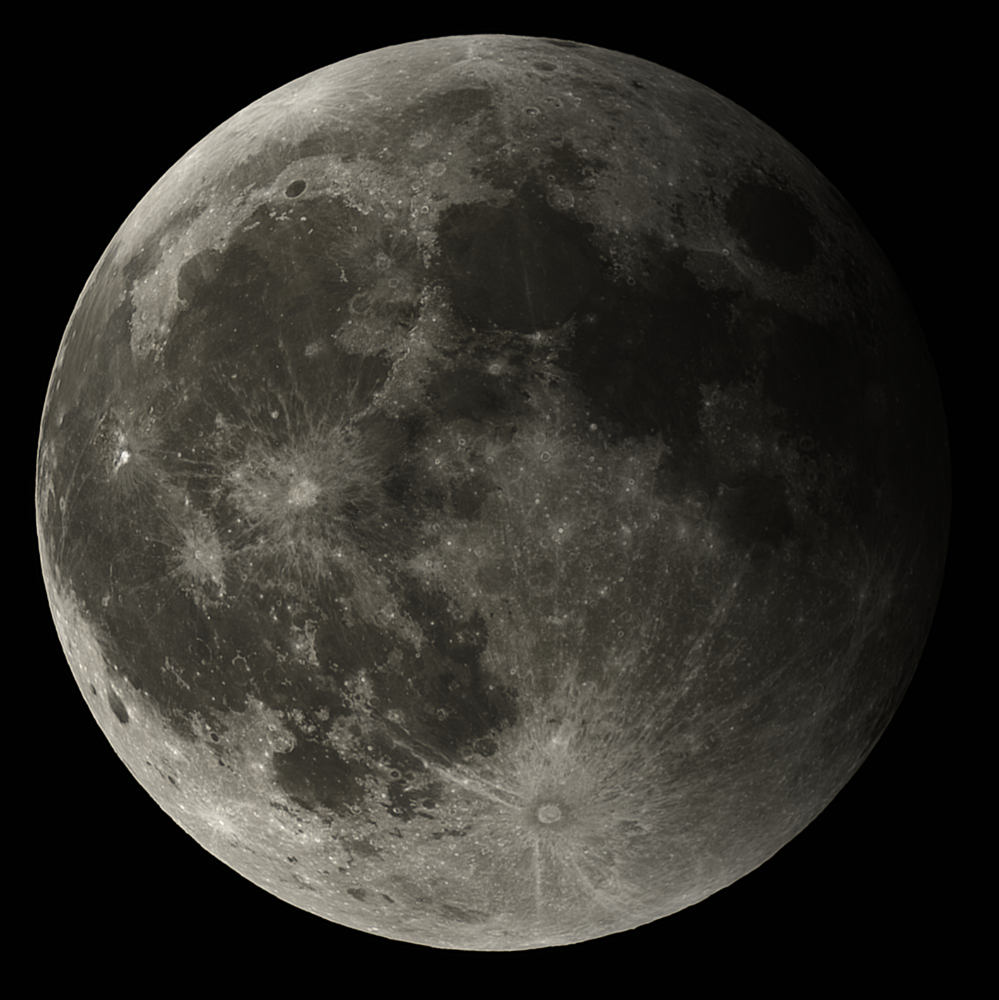We had fine weather here in North Carolina for the Pi Day March eclipse of the moon. Here’s how it looked through my telescope.
Fully-eclipsed moon (March 14, 2025 2:36 am EDT)
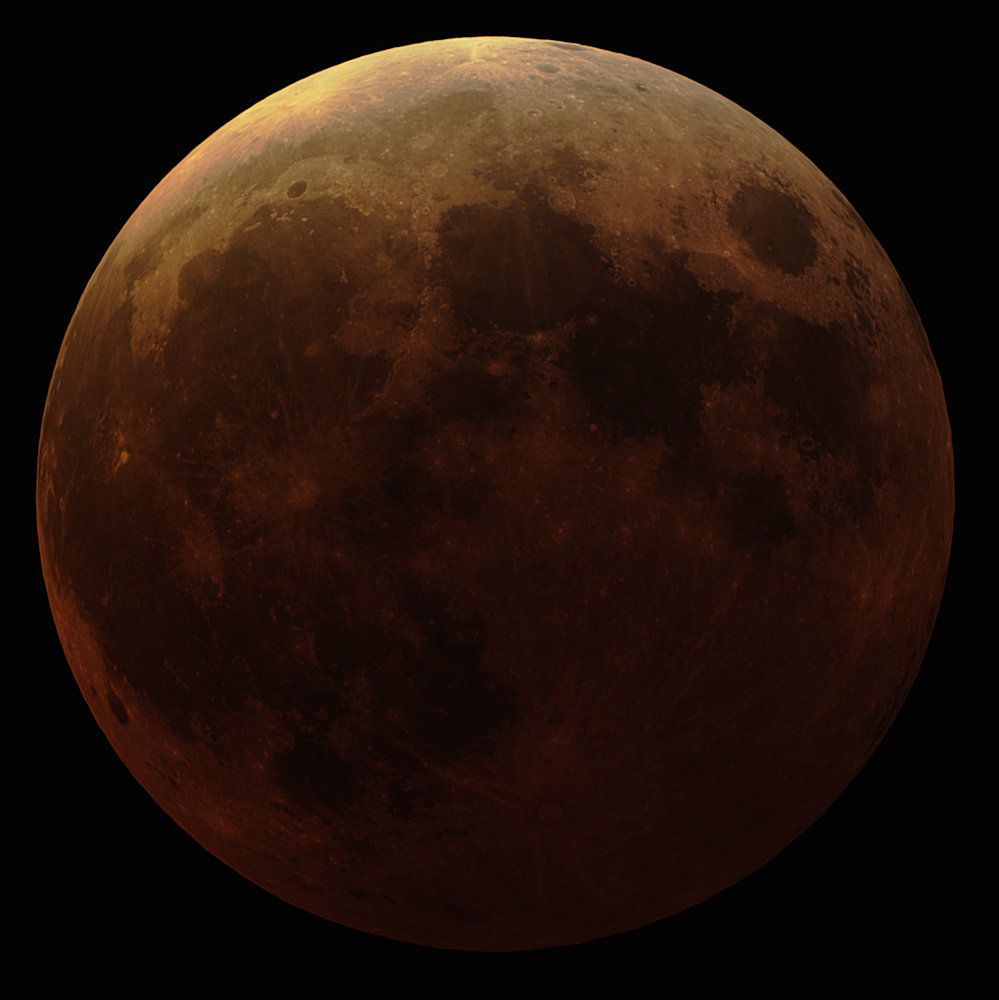
How the eclipse progressed (a slideshow)
Click the button below to start the show. You can pause/resume as well as manually forward and backward.
What was going on
This diagram from Sky and Telescope Magazine shows what was going on. (Times are in UT, 4 hours ahead of EDT)

The moon, traveling from right to left in the diagram first entered the umbra (dark part of the earth’s shadow) at 1:09 EDT, with the shadow
touching about the 8 o’clock position. It was completely eclipsed beginning at 2:26 EDT. When totality was over at 3:32 EDT, the first part of the moon hit by
sunlight was at the 10 o’clock position.
Why the moon is usually a reddish color when totally eclipsed
Think of your typical reddish sunset. The earth blocks off all direct sunlight from hitting anywhere on the moon during a total eclipse. But some sunlight refracts through the atmosphere at the edges – these edges are all the places on earth experiencing sunrise or sunset at the time. The eclipsed moon is reddish for the same reasons that sunsets are red. The degree of redness varies considerable from eclipse to eclipse, depending on the amount of dust and water vapor present in the sunset areas around the globe.
Here is a fascinating picture taken from the moon just after the total eclipse ended, showing the ring of light being refracted through all the sunsets and sunrises on earth.
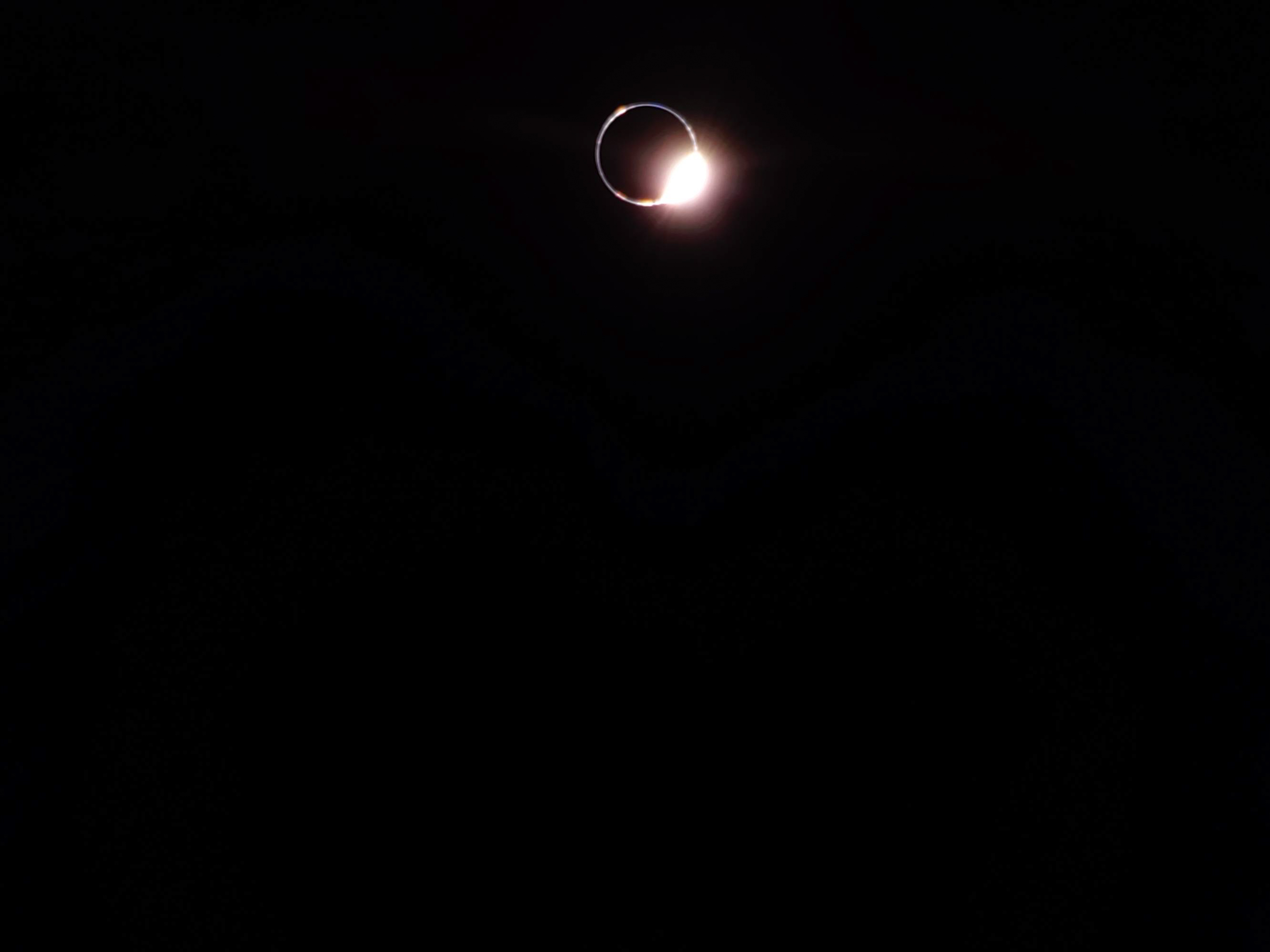 Image Credit: Firefly Aerospace
Image Credit: Firefly Aerospace
Operating in the Mare Crisium on the lunar surface, the Blue Ghost lander captured this video frame of Earth in silhouette just as the Sun was emerging from behind the terrestrial disk. From Blue Ghost’s lunar perspective the beautiful diamond ring effect, familiar to earthbound solar eclipse watchers, is striking. Scattering in Earth’s dense atmosphere creates the glowing band of sunlight embracing our fair planet.
The Blue Ghost Mission 1 lander was launched by Firefly Aerospace in mid-January and landed on the moon on March 2. It was the first successful commercial moon landing. The lander delivered 10 NASA science and delivery payloads to the Mare Crisium basin.(Mare Crisium is the dark oval area near the moon’s edge at the 2 o’clock position in my images.)
